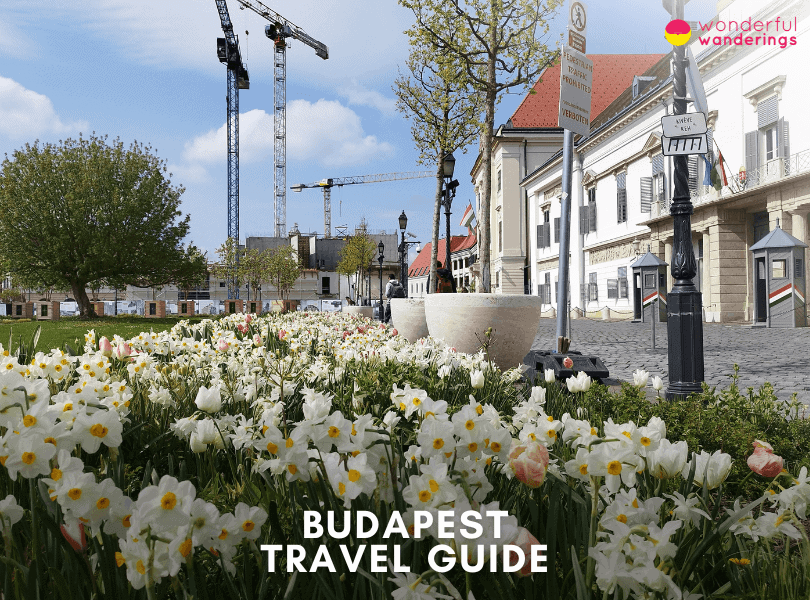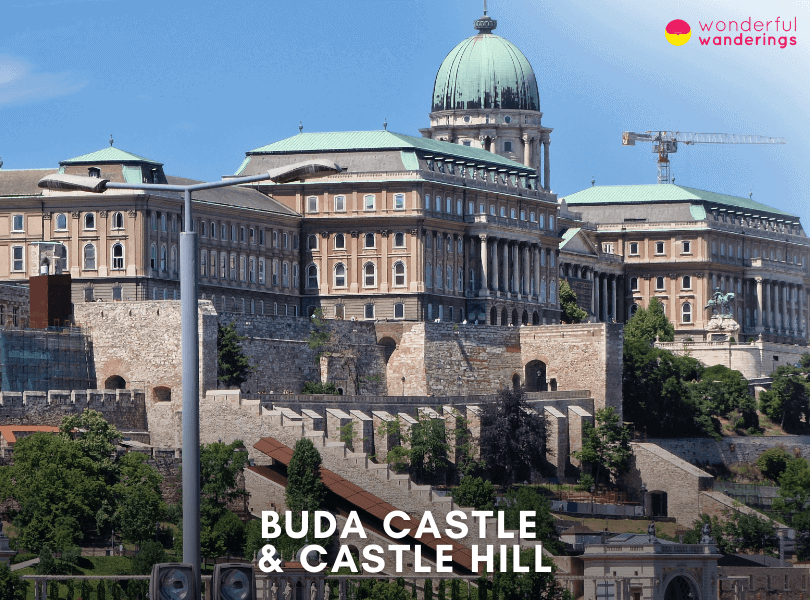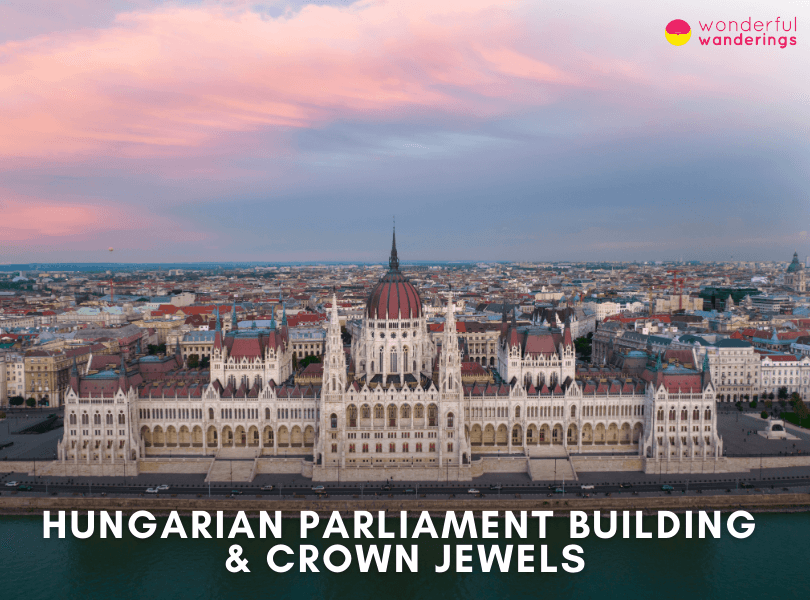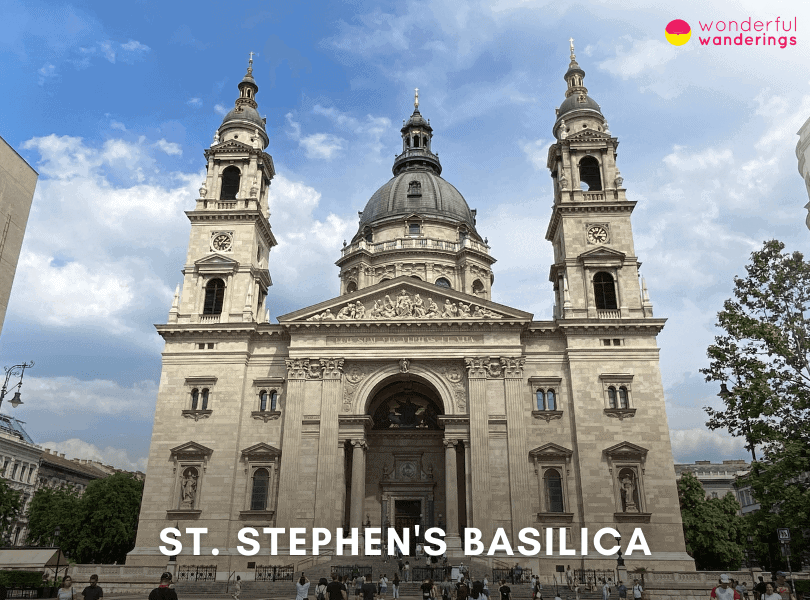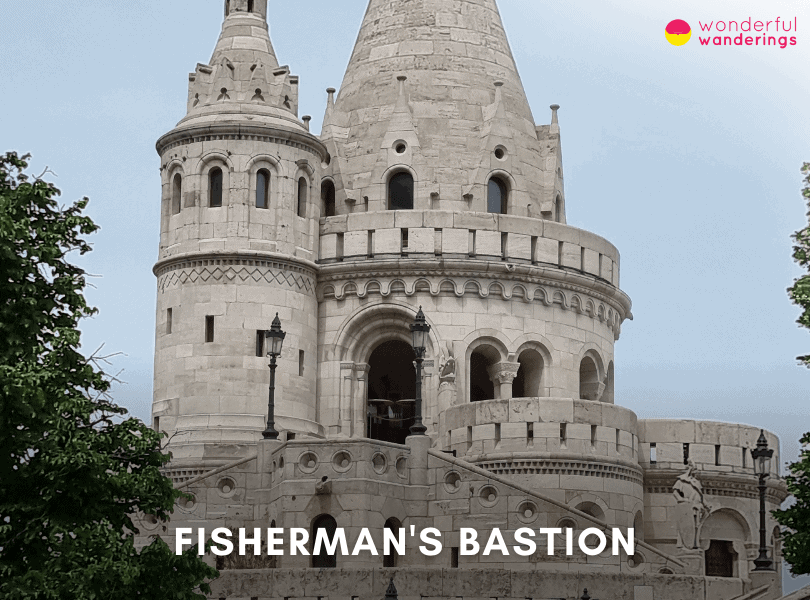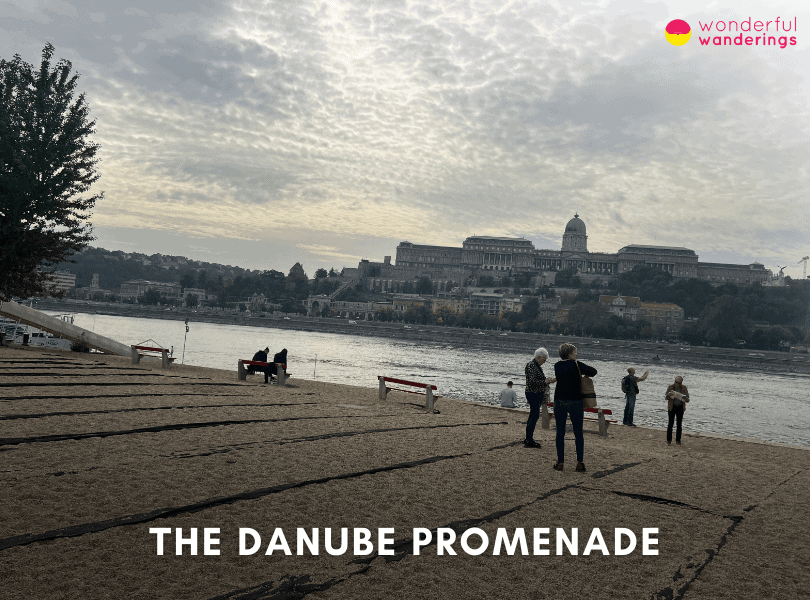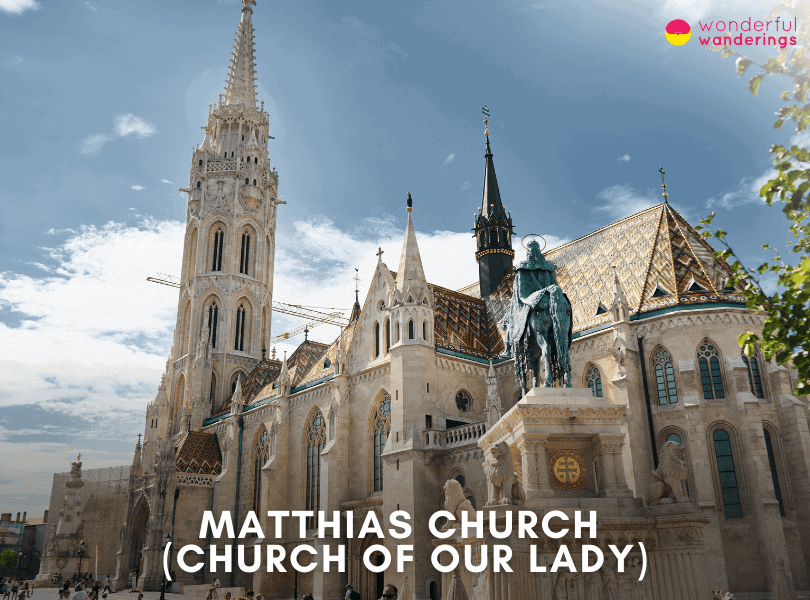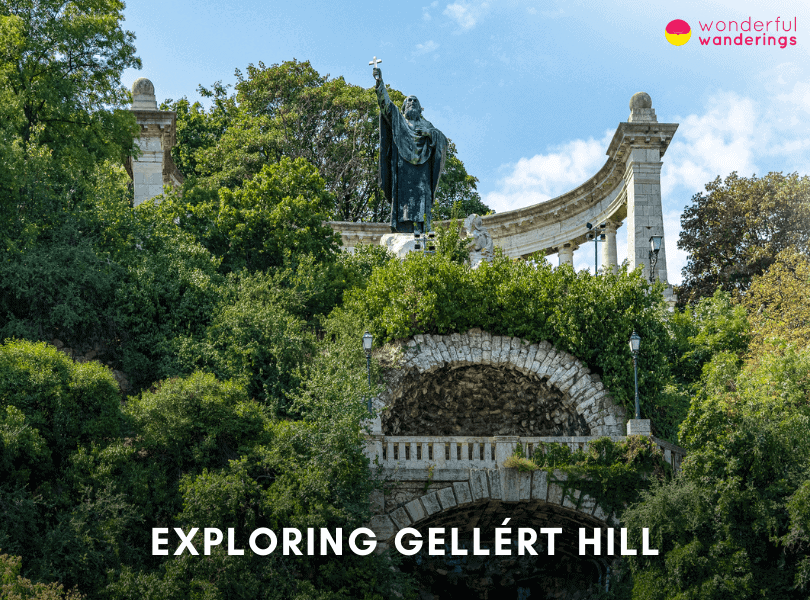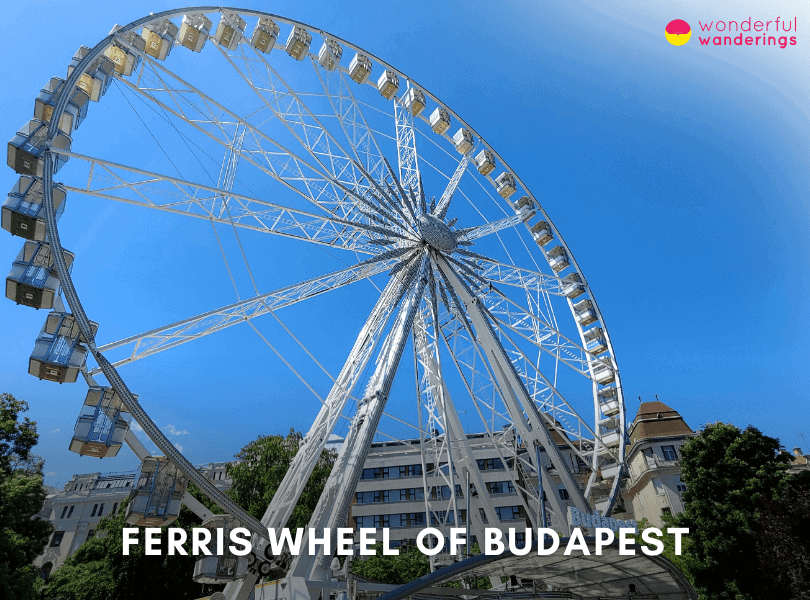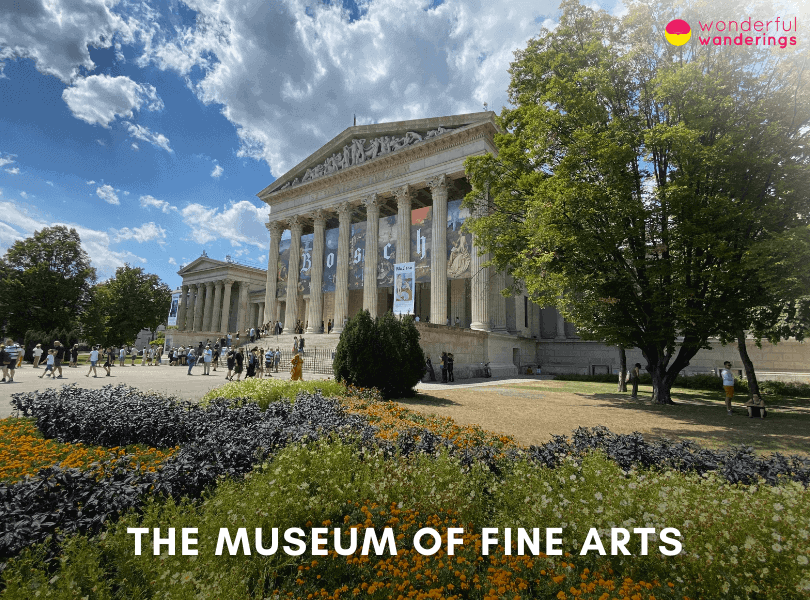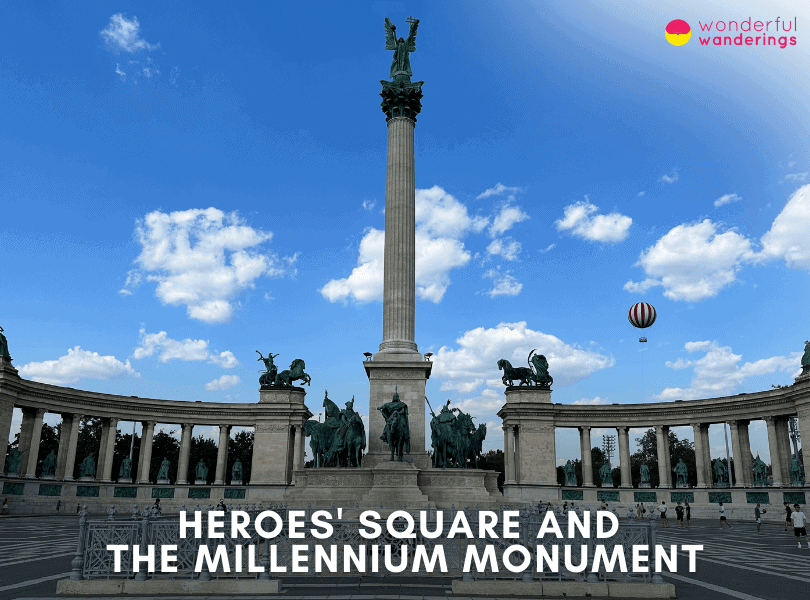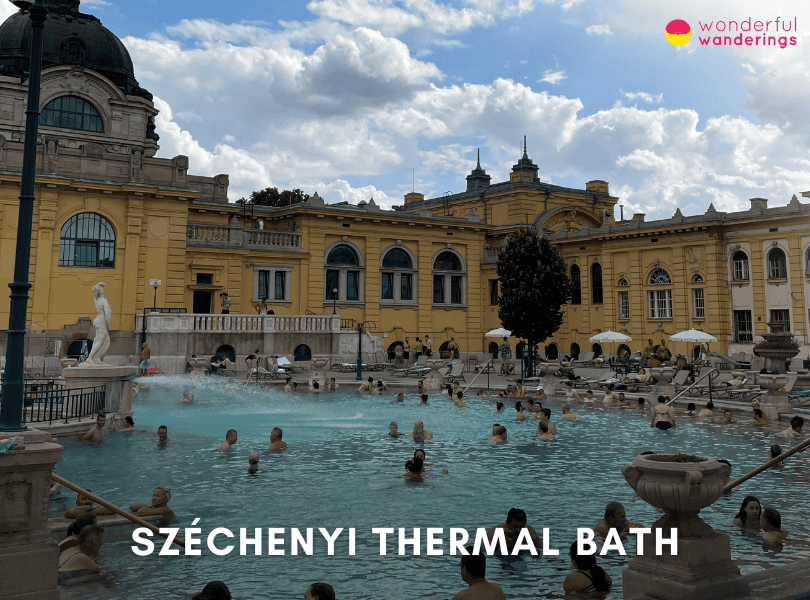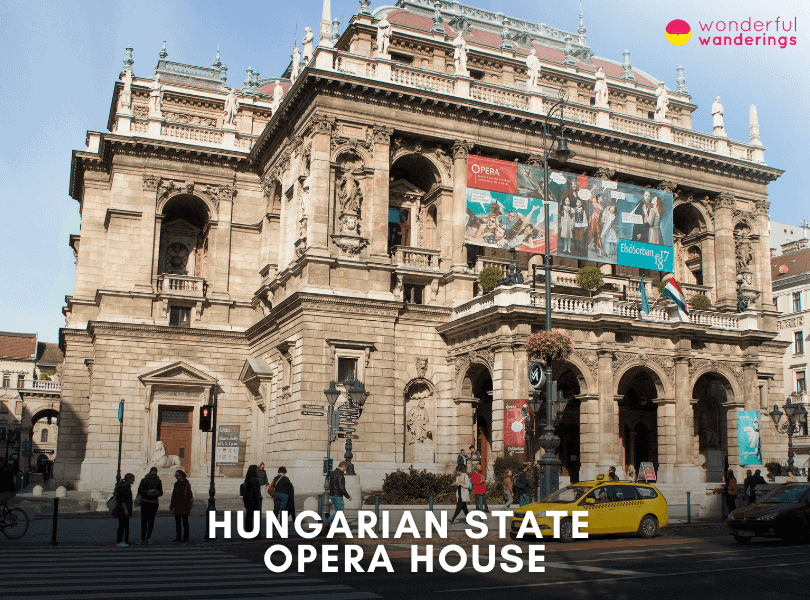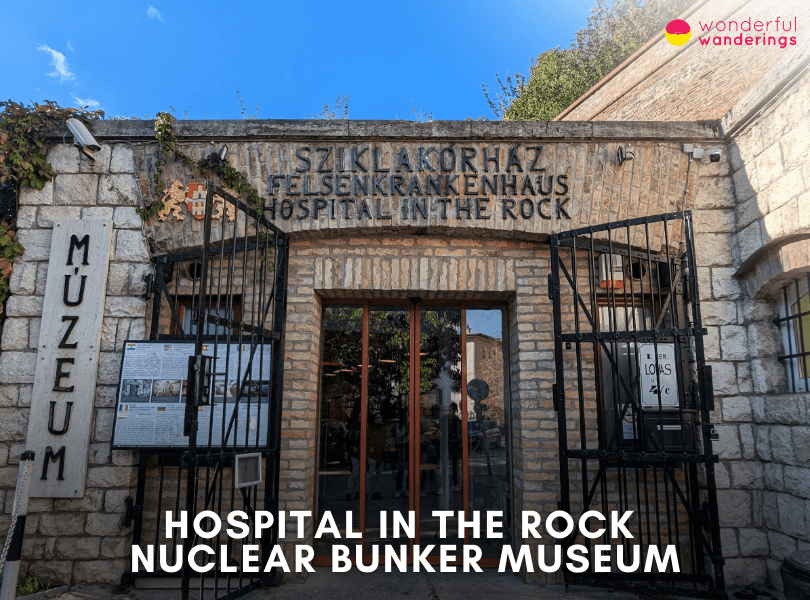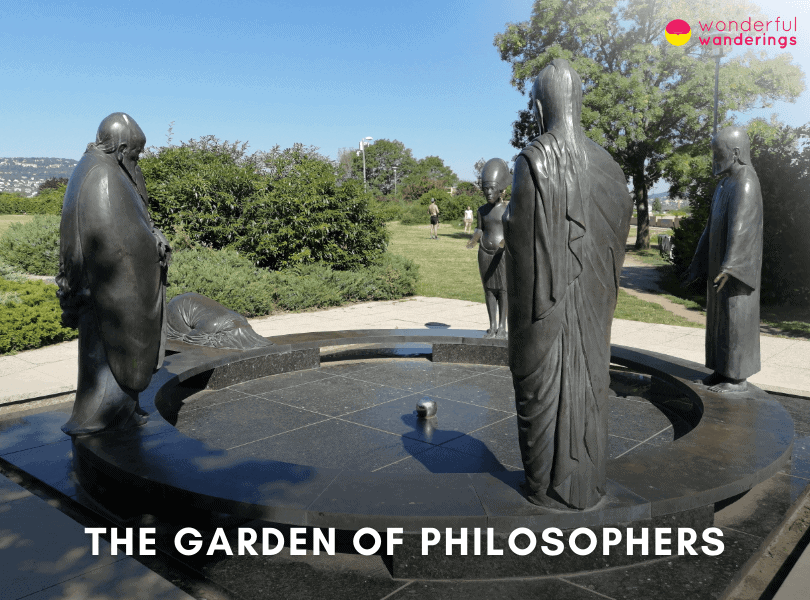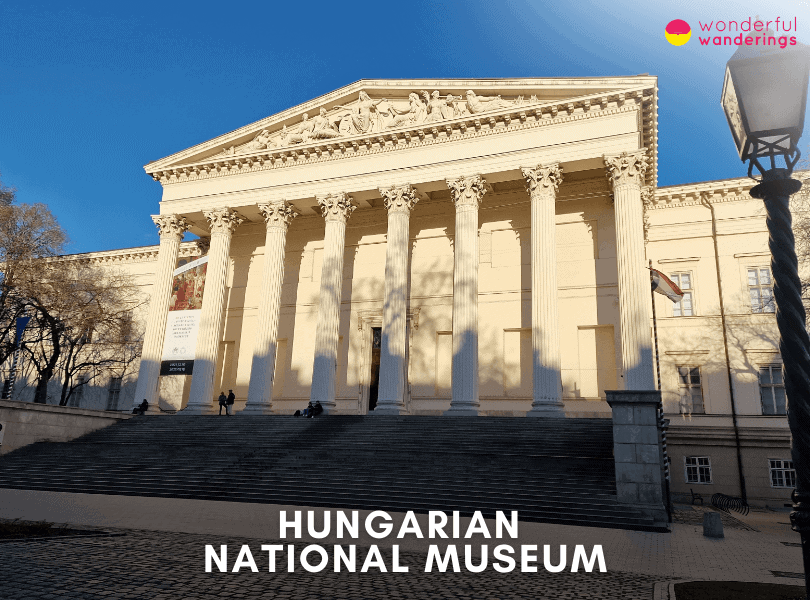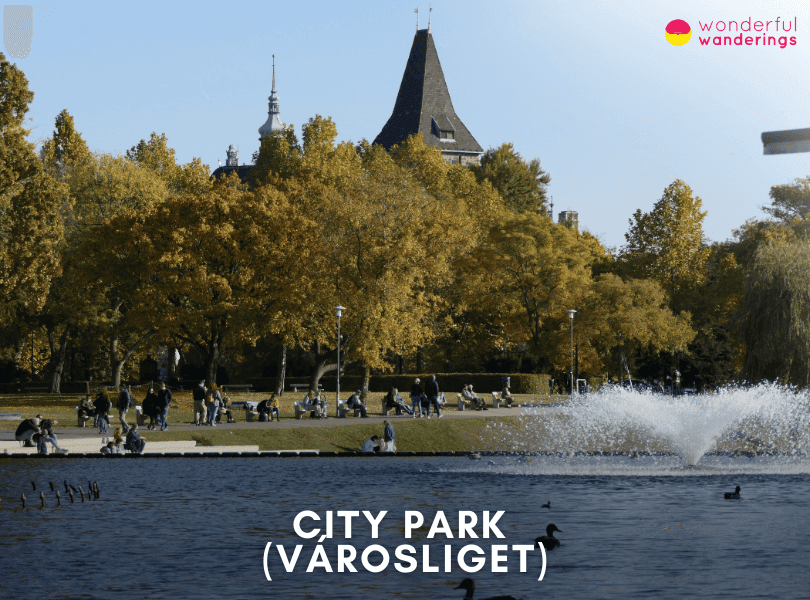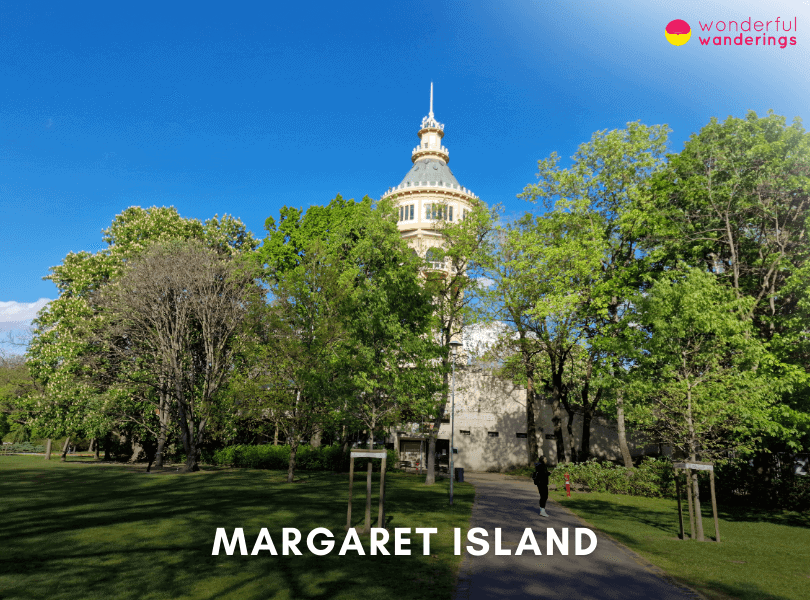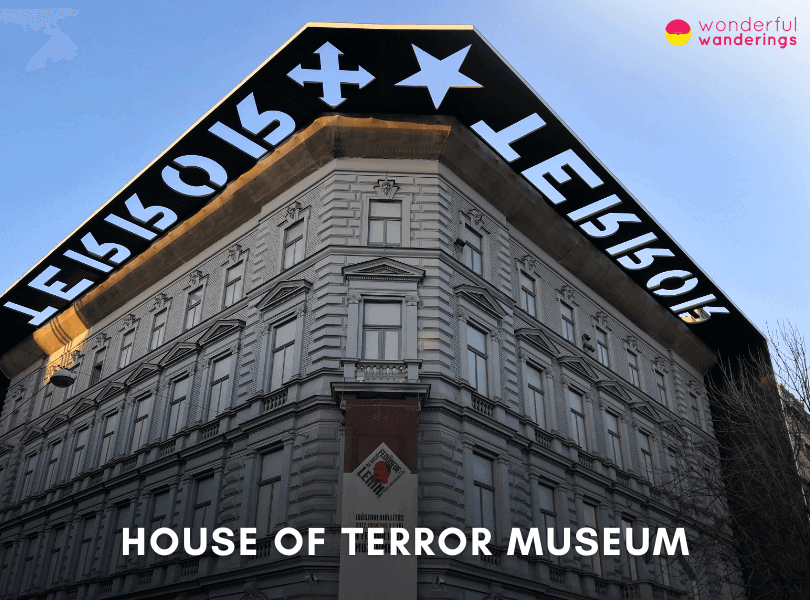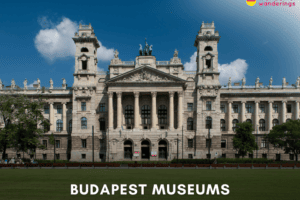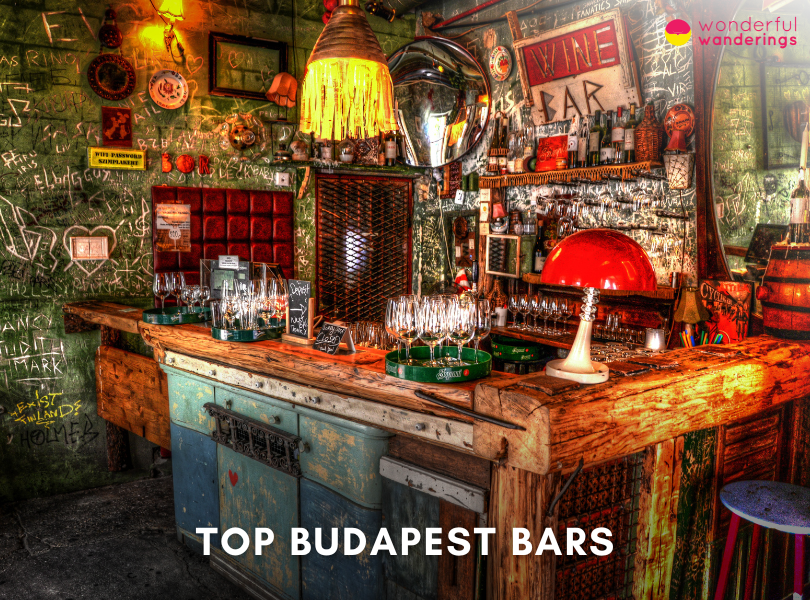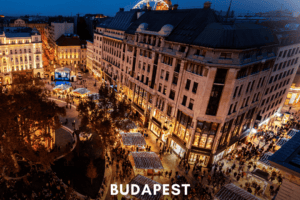Budapest, often referred to as the “Paris of the East” due to its architecture and rich cultural heritage, is Hungary’s capital and largest city. Pronounced “Boo-da-pesht”, this enchanting city straddles the Danube River, creating a panorama of historic districts and modern developments. Budapest is a city steeped in culture and tradition. It was officially formed in 1873 by merging three towns. Buda, Pest and Óbuda. Each of these districts contributes to the city’s unique character, with Buda showcasing the medieval Buda Castle, Pest offering urban life and Óbuda providing a glimpse into Budapest’s ancient past. Budapest has endured significant historical events, including Ottoman rule, the Habsburg Empire and the tumultuous 20th century. Its resilient spirit is evident in its well-preserved architecture, a testament to the city’s ability to rise from the ashes of adversity.
The climate in Budapest is characterized by four distinct seasons. Spring brings a gradual warming, with blossoming trees and flowers. Summers are warm to hot, ideal for outdoor exploration, while autumn offers mild and pleasant weather with colorful foliage. Winters are cold, with occasional snowfall, transforming the city into an excellent winter wonderland. Budapest’s continental climate and temperature fluctuations provide diverse experiences for travelers throughout the year. Budapest is home to 9.6 million people, making it the most populous city in Hungary. Its residents enjoy a high standard of living and Budapest serves as the country’s economic, cultural and political center. It is known for its thermal baths, including the Széchenyi and Gellert Baths, which offer relaxation and healing properties in splendid architectural settings. Additionally, Budapest has a vibrant arts scene, with numerous museums, theaters and music festivals catering to various cultural interests.
Listed below are the things to do in Budapest, Hungary
- Buda Castle & Castle Hill. Buda Castle is a historic palace and castle complex in Budapest, Hungary. It sits atop Castle Hill, overlooking the Danube River and Pest cityscape. First built in the mid-13th century, it has been destroyed and rebuilt many times. Today, the Baroque palace houses the Budapest History Museum and the Hungarian National Gallery. The grounds feature architecture, statues and views of the Danube. Visitors can take the funicular up Castle Hill or walk the cobblestone streets. The palace exhibits showcase Budapest’s 2000-year history. Buda Castle is a UNESCO World Heritage Site and a must-see for any visitor to Budapest.
- Hungarian Parliament Building & Crown Jewels. The Hungarian Parliament Building is an iconic landmark in Budapest, situated on the Pest side of the city facing Buda Castle. The castle is located in Kossuth Lajos Square, the Gothic Revival building contains 691 lavishly decorated rooms. Visitors can take guided tours to see highlights like the Golden Staircase, Dome Hall displaying the Holy Crown of Hungary and the former Upper House chamber. Other attractions include viewing the Hungarian Crown Jewels. The nearest metro stop is Kossuth Lajos tér. Advance tickets are recommended for the popular 45-minute tours offered in various languages.
- St. Stephen’s Basilica. St. Stephen’s Basilica is a Roman Catholic minor basilica in Budapest, Hungary. Named after the nation’s first king, it was constructed from 1851 to 1905 in neoclassical and neo-renaissance architectural styles. It is located on the Pest side, main highlights include the Holy Right Chapel displaying St. Stephen’s preserved hand, panoramic views from the dome and concerts featuring the basilica’s renowned acoustics. The basilica is easily accessible, with the metro, trams and buses stopping nearby. Guided tours and tower access have small fees. St. Stephen’s Basilica is open daily to visitors, making it a convenient and inspiring addition to any Budapest itinerary.
- Fisherman’s Bastion. Fisherman’s Bastion is a neo-Gothic terrace and lookout tower located in Budapest, Hungary. Built between 1895-1902 on Castle Hill, it overlooks the Danube and cityscape. It is designed by Frigyes Schulek, the Bastion’s 7 towers represent the 7 Magyar tribes that settled Hungary. It was constructed for the millennial celebrations marking 1000 years of Hungary. The Bastion offers panoramic views of landmarks like Buda Castle, Parliament Building and Chain Bridge. Visitors can stroll the terraces, access the turrets for views and see Matthias Church nearby. The Bastion is easily accessible by bus, funicular railway or walking from Batthyány tér metro station.
- The Danube Promenade. The Danube Promenade is a 1.5 km (0.93 miles) scenic esplanade along the Pest bank of the Danube River in central Budapest. Running from Elizabeth Bridge to Chain Bridge, the tree-lined walkway passes landmarks like Parliament and luxury hotels with river views. Badly damaged in WWII, it was reconstructed in the 1970s. Highlights include the “Shoes on the Danube” memorial, concert halls and outdoor restaurants and cafes ideal for relaxing. The Danube Promenade offers the perfect way to experience the heart of Budapest.
- Matthias Church (Church of Our Lady). Matthias Church, formally the Church of Our Lady, is a 13th-century Roman Catholic church located next to Fisherman’s Bastion in the Buda Castle District overlooking the Danube River. Visitors can admire the architecture and interior artwork. Guided tours provide historical context about the church’s role in Hungarian royal events over 700 years.
- Exploring Gellért Hill. Gellért Hill is a 235-meter high dolomite limestone hill overlooking the Danube River in Budapest, Hungary. It is located on the Buda side, it spans from the Gellért Hotel to the Liberty Bridge. Named after Saint Gerard, the hill features walking paths leading to landmarks like the Liberty Statue and Citadella fortress which offer panoramic views of the city. Other attractions include the Cave Church and St. Gellért Monument. The Gellert Hill has admission fees for the Cave Church and baths.
- Ferris Wheel of Budapest. The Ferris Wheel of Budapest, also called the Budapest Eye, is a 65-meter (213 ft) tall observation wheel located in Erzsébet Square in central Budapest. Ferris Wheel of Budapest opened in 2017 and has 42 climate-controlled gondolas seating up to 8 passengers each. The 10-minute ride does three revolutions rising to 65 meters (213 ft), offering panoramic views of landmarks like Buda Castle, Parliament, St. Stephen’s Basilica and more. The wheel is illuminated by LED lights and operates year-round, day and night.
- The Museum of Fine Arts. The Museum of Fine Arts is located in Heroes’ Square at the end of Andrássy Avenue in Budapest. It was built between 1900-1906 and it now houses a collection of over 100,000 pieces of international and Hungarian art. Highlights include ancient Egyptian artifacts, a gallery of Old Master European paintings from the 13th-18th centuries, European sculptures and Gothic, Renaissance and Baroque Hungarian artworks. The museum is known for its Egyptian collection, Old Masters paintings and recently reopened Hungarian gallery after a 60-year absence.
- Heroes’ Square and the Millennium Monument. Heroes’ Square is a major square located at the end of Andrássy Avenue in Budapest, Hungary. It contains the Millennium Monument built in 1896 to commemorate 1000 years since the Magyar conquest. The monument’s column is topped by a statue of the Archangel Gabriel and features statues of Hungarian rulers and chieftains below. In front is the Tomb of the Unknown Soldier cenotaph. The Museum of Fine Arts and Palace of Art flank the square. Heroes’ Square has been the site of ceremonies and protests throughout Hungary’s history.
1. Buda Castle & Castle Hill
Buda Castle is a historic palace and castle complex located in Buda Castle Szent György tér 2, 1014 Budapest, Hungary. The castle sits atop Castle Hill (Várhegy), adjacent to Castle District (Váralja), on the Buda side of Budapest. It overlooks the Danube River, facing the Pest side of the city. It’s close to major landmarks like the Chain Bridge, Parliament Building and St. Stephen’s Basilica. Budapest, Hungary. It sits atop Castle Hill, a limestone plateau overlooking the Danube River. The first royal palace on Castle Hill was built in the mid-13th century, after the Mongol invasions. It has been destroyed and rebuilt many times over the centuries. Today, the palace is a UNESCO World Heritage Site and houses the Hungarian National Gallery and Budapest History Museum.
Visitors can see and do so while exploring Buda Castle and Castle Hill. The palace grounds offer beautiful architecture, statues like the Horse Herd statue and sights like the National Library. The views from the palace over the Danube are stunning. Visitors can also tour the Castle Museum to learn about Budapest’s past spanning 2000 years. The museum displays archaeological remains and medieval palace rooms. There are often special exhibitions and events happening on Castle Hill as well, such as festivals, temporary markets or theater performances.
There are several convenient transportation options for getting to Buda Castle and Castle Hill. The most popular is likely the Budavári Sikló funicular that runs from Clark Ádám tér at the bottom of Castle Hill near the Chain Bridge. The funicular ride takes just a few minutes to ascend and provides stunning views. Another option is walking up the cobblestone streets and paths leading to the castle entrance gates. Public bus lines 16 and 16A also run to Szent Gellért tér at the southern end of Castle Hill near the Gellért Hotel. Additional buses stop near major landmarks like the Matthias Church. Visitors can take the 100E or 200E bus from Deák Ferenc tér in central Pest over the Chain Bridge and along the Buddha riverfront to Clark Ádám tér at the funicular station below Buda Castle. This option combines a bus ride with a short funicular trip or walk to reach the palace grounds and Castle Hill attractions.
2. Hungarian Parliament Building & Crown Jewels
The Hungarian Parliament Building is one of Budapest’s most iconic landmarks, located on Hungarian Parliament Building, Kossuth Lajos tér 1-3, 1055 Budapest, Hungary. The Parliament Building sits on the Pest side of Budapest, on the eastern bank of the Danube River, facing the Buda hills. It is situated in Kossuth Lajos Square, adjacent to the Gothic Revival Parliament Library building. The interior contains 691 rooms, with spaces like the Golden Staircase, Dome Hall and former Upper House chamber. The building exemplifies Hungary’s sovereignty and is a top tourist attraction for its architecture and history.
Visitors can take a guided tour of the interior of the Hungarian Parliament Building to admire its grand architecture and learn about its history first-hand. Tours allow visitors to see ornate rooms like the Golden Staircase, Dome Hall where the Holy Crown of Hungary is displayed, the former Upper House chamber and other rooms decorated with statues, paintings, frescoes and other intricate details. Guides provide commentary on the rooms and buildings as you walk through. Another highlight is viewing the Hungarian Crown Jewels, including the bejeweled Holy Crown dating to the 12th century, the royal orb, scepter and coronation sword.
The Hungarian Parliament Building is easily accessible by public transportation. The nearest metro stop is Kossuth Lajos tér on the M2 red line. From here, it’s just a short 5-minute walk north across Kossuth Lajos Square to reach the Parliament. This is the most direct metro route. Alternatively, tram lines 2, 47 and 49 all stop right outside the Parliament Building on Kossuth Lajos Square along the Danube riverbank. Trams provide a scenic above-ground route. Buses 8E and 110 also stop very nearby at Jászai Mari tér, just a couple minutes’ walk east of Parliament.
Guided tours are offered in Hungarian and English. Tours last about 45 minutes. Tickets can be purchased on the Hungarian Parliament website in advance or on-site if available. Only a limited number of same-day tickets are sold, so advance online booking is recommended to ensure entry, especially during peak visitor months.
3. St. Stephen’s Basilica
St. Stephen’s Basilica is a Roman Catholic minor basilica in Szent István tér 1 Budapest, 1051, Hungary. The basilica sits on the Pest side of the city, facing the Danube River. It is situated on St. Stephen’s Square in the Lipótváros district, close to major attractions like the Hungarian Parliament Building and Chain Bridge. Budapest, Hungary. It is named after the nation’s first king, St. Stephen I. The basilica was constructed over the course of more than 50 years, from 1851 to 1905. Its architecture features a mix of neoclassical and neo-renaissance styles.
Visitors to St. Stephen’s Basilica can admire its architecture, see Catholic relics and take in beautiful city views. The main highlights include Viewing the Holy Right Chapel to see the preserved right hand of St. Stephen. Climb up to the dome for impressive 360° panoramas over Budapest. Visitors can either walk up 300+ steps or take an elevator. Attending an organ concert, classical music performance or Catholic mass, especially on Sundays and holidays.
St. Stephen’s Basilica is located right in the heart of Budapest and is easy to reach by various modes of public transportation. The most direct metro route is to take the M3 blue line to the Arany János utca station. From here, the basilica is just a 2-minute walk south. Visitors can also take the M1 yellow line to Bajcsy-Zsilinszky út station, which is about a 5-minute walk from the basilica. Alternatively, tram numbers 47 and 49 stop right at the basilica’s doorstep on St. Stephen’s Square. These trams connect to metro stations across Budapest. Buses 8E and 110 also stop very nearby on Jászai Mari tér, just east of the basilica behind the InterContinental Hotel. There is no admission fee to enter the basilica, though visitors can leave donations. Special tours, tower access and concerts do have small fees. St. Stephen’s Basilica is open daily to the public, making it a convenient and inspiring place to include on any Budapest itinerary.
4. Fisherman’s Bastion
Fisherman’s Bastion is a neo-Gothic terrace and lookout tower located in Szentháromság tér, 1014, Castle District of Budapest, Hungary. Built between 1895-1902, it sits atop Castle Hill overlooking the Danube River. The Bastion consists of 7 towers representing the 7 Magyar tribes that settled in Hungary in 895 AD. Designed by architect Frigyes Schulek, Fisherman’s Bastion was constructed as part of Budapest’s millennial celebrations marking 1000 years of Hungary. It was built on the site of medieval defensive walls once protected by the local fishermen’s guild, hence the name. The Bastion was designed as a scenic viewing terrace taking advantage of the panoramic views of Budapest and the Danube below.
Visitors to Fisherman’s Bastion can stroll along the lower and upper terraces to take in panoramic views of Budapest and the Danube below. The arcades, turrets and staircases make for great photo opportunities. The Bastion offers one of the best vantage points to see landmarks like the Parliament Building, Chain Bridge, Buda Castle and more. Visitors can also try to identify each of the 7 towers representing the Hungarian tribes. For a small fee, visitors can access the upper levels and turrets of the Bastion for even better views. The Bastion is particularly beautiful lit up at night when its white stone glows under lights. In the daytime, you’ll find street performers, musicians and artists around the Bastion. There’s also a cafe on site to stop for a drink or snack. Guided tours of Fisherman’s Bastion are available for more historical context.
Fisherman’s Bastion can be reached by bus 16 from Deák Ferenc tér in central Pest. The bus crosses the Chain Bridge and drops off right at Dísz tér in front of the Bastion. Total trip time is about 15-20 minutes. Alternatively, from Batthyány tér metro station on the M2 line, it’s about a 10 minute uphill walk through winding cobblestone streets to reach the Bastion entrance. Visitors can also take the Sikló funicular railway up to the entrance of the Bastion from Clark Ádám tér at the Buda end of the Chain Bridge. Many walking tours of Budapest also include a stop at Fisherman’s Bastion, providing guided access.
5. The Danube Promenade
The Danube Promenade is a esplanade spanning 1.5 kilometers (0.93 miles) along the Pest bank of the Danube River in central Budapest. It runs from the Elizabeth Bridge to the Chain Bridge, passing landmarks like the Hungarian Parliament Building. The tree-lined pedestrian walkway is filled with luxury hotels, restaurants, cafes, casinos and cultural sites with stunning views across to the Buda Hills. The promenade has been an aristocratic enclave since the mid-19th century. It was badly damaged in World War II but reconstructed in the 1970s.
Visitors to the Danube Promenade can simply relax and take in the exceptional views of Castle Hill and the Danube River. The promenade path is lined with benches, gardens, fountains and restaurants with outdoor seating ideal for resting weary feet. Tourists also enjoy photographing the grand architecture all around like the Hungarian Parliament Building. And locals often exercise, walk their dogs or meet friends along the scenic route. The key highlights include the Vigadó Concert Hall with its romantic facade, the iconic “little princess” statue perched on the railing and the sobering “Shoes on the Danube” memorial commemorating Jews killed in WWII. Visitors can also hop on sightseeing cruises that depart from docks along the promenade for river tours. In the evenings, the views of Buda Castle and Fisherman’s Bastion lit up across the river are exceptional.
The Danube Promenade is centrally located and easily accessible by public transportation. Visitors can take trams 2 or 47/49 which run the length of the promenade from north to south. The M2 metro line stops at Kossuth Lajos tér station right next to the Hungarian Parliament Building in the middle of the promenade. Many central hotels are within walking distance. Tourists crossing the Chain or Elizabeth Bridge from the Buda side can simply walk down to river level to access the promenade path.
The Danube Promenade is completely free to access with no admission cost. As a public walkway and park open 24 hours a day, visitors can casually stroll or relax along the riverfront without any charge. Tourists are simply able to take in views of Buda Castle, people watch at sidewalk cafes, photograph the architecture or memorials and access river cruise docks at their leisure. Events like summer concerts may have seating fees. But otherwise the exceptional scenery and attractions of the Danube Promenade can be enjoyed without any admission tickets.
6. Matthias Church (Church of Our Lady)
Matthias Church, more formally known as the Church of Our Lady, is a Roman Catholic church located in Szentháromság tér 2, 1014 Budapest, Hungary. It sits in the heart of the Buda Castle District of Budapest, right next to the Fisherman’s Bastion and overlooking the Danube River. It neighbors other landmarks like the National Archives and the Sándor Palace. The current church largely dates from an extensive late 19th-century reconstruction and restoration, which added colorful roof tiling and ornate Neo-Gothic decoration. Matthias Church has been the site of many coronations, weddings and other major events in Hungarian history. It is named after the popular 15th-century King Matthias, who held both his weddings there. The church’s beautiful interior features frescoes, stained glass windows, carved stone details and a replica of the Hungarian royal crown and jewels on display.
Visitors to Matthias Church can admire its colorful tiled roof and imposing Gothic architecture from the outside plaza. Inside, tourists can explore the ornate interior and view frescoes, stained glass artwork, carved statues and other details. The church displays replicas of the Hungarian royal crown and other coronation regalia. Visitors may also attend a mass, organ concert or other event in the beautifully adorned sanctuary. Guided tours provide more historical context. Visitors to Matthias Church can simply take in the soaring architecture or delve deeper into the church’s rich history as the site of royal weddings, funerals and other ceremonies over 700 years.
Matthias Church enjoys a central location in Budapest easily reachable by public transportation. Visitors can take tram number 16 from Deák Ferenc tér on the Pest side over the Chain Bridge to the Dísz tér stop right in front of the church entrance. Alternatively, bus 16 drops off at Dísz tér after crossing the bridge. The closest metro stop is Batthyány tér on the M2 red line, about a 10 minute uphill walk through quaint streets to reach the church. The church sits right next to the upper terminal of the Sikló funicular that ascends to the Buda Castle District from the riverfront below.
Entrance into the sanctuary of Matthias Church is completely free with no admission cost. As an active Catholic church, its doors remain open to all visitors who wish to enter and view the stunning architecture and interior details. Special guided tours, tower access and concerts do have additional fees. ts.
7. Exploring Gellért Hill
Gellért Hill is a 235-meter-high dolomite limestone hill overlooking the Danube River in Budapest, Hungary. Gellért Hill is located in Budapest, the capital city of Hungary. It sits on the west side of the Danube River in the Buda hills within Budapest’s 1st district.
The hill spans an area between Szent Gellért tér near the Gellért Hotel and Szabadság híd (Liberty Bridge) to the south and Döbrentei tér near the Rudas Baths and Erzsébet híd (Elizabeth Bridge) to the north. The hill was named after Saint Gerard who was killed there in 1046 AD during a pagan uprising against Christianity. A large bronze statue of Saint Gellért now stands at the base of the hill. On top of the hill sits the Citadella, a fortress built by the Habsburgs after the 1848 revolution to intimidate citizens.
Visitors can explore several historic and scenic attractions at the top and around Gellért Hill. Walking paths wind up the hill past sites like the Cave Church and St. Gellért Monument to reach the Liberty Statue and Citadella fortress. The statue and fortress offer some of the best panoramic views over Budapest and the Danube below. Tourists can also snap photos of the hill’s landmarks like the imposing Citadella walls and the towering Liberty Statue. The wooded areas along the walking paths provide nice spots to take a break. And benches are placed at scenic lookout points to enjoy the views of Castle Hill, the bridges and city skyline. The hillside park behind the Citadella has a playground, fields and trails for recreation. At night, the landmarks light up providing a beautiful scene. At the base of the hill, visitors can soak in the historic thermal baths of the Gellért Hotel or Rudas Baths.
Gellért Hill is easily accessible via several public transportation options. Bus lines 7, 86 and 110 stop at the bottom of the hill at Szent Gellért tér near the Gellért Hotel. From here, visitors can walk up the hill via paths and stairs. Bus line 27 stops at Döbrentei tér at the northern end of the hill near the Rudas Baths. The Citadella and Liberty Statue are about a 10-15 minute walk up from here. The closest metro stations are Déli Pályaudvar on the M2 line or Batthyány tér on the M2 line, each about a 15 minute walk to the lower parts of the hill. Tram lines 19 and 41 also stop near the bottom of the hill on the Buda side.
It is completely free to walk around Gellért Hill and take in the outdoor sights like the Liberty Statue, Citadella fortress and viewpoints. Visitors can explore the trails, park areas, landmarks and scenic overlooks at no cost. The Citadella fortress is currently closed for renovations until 2024 and The Gellért Baths and Rudas Baths charge separate entrance fees to use the spa facilities.
8. Ferris Wheel of Budapest
The Ferris Wheel of Budapest, also known as the Budapest Eye, is a 65-meter (213 ft) tall observation wheel located in Erzsébet Square in Budapest Eye Ferris Wheel
Erzsébet tér, Budapest 105. Opened in 2017, it is one of the largest transportable Ferris wheels in Europe. The wheel has 42 climate-controlled gondolas that each hold up to 8 passengers. Rides last 10 minutes as the wheel does three full revolutions, rising to a height of 65 meters (213 ft) for panoramic views over Budapest’s cityscape. Key landmarks visible include the Danube River, Buda Castle, Matthias Church, Fisherman’s Bastion, the Hungarian Parliament Building and St. Stephen’s Basilica. The Ferris wheel is illuminated by energy efficient LED lighting and operates year-round, making it both a daytime and nighttime attraction in Budapest.
Visitors can ride the Budapest Eye Ferris Wheel to take in panoramic views from 65 meters (213 ft) up in the air. The 10-minute ride does three revolutions, allowing riders to see top Budapest landmarks in all directions, like Buda Castle glittering across the river, the domes of St. Stephen’s Basilica and the spires of Matthias Church atop Castle Hill. The semi-enclosed gondolas provide great sightseeing opportunities while protecting from the weather. Visitors can purchase standard tickets or priority boarding. The wheel is particularly stunning to ride at night when colorful LED lights illuminate the structure against the city skyline. The Ferris Wheel often hosts special events as well, from Valentine’s Day packages to Christmas market rides. With sweeping vistas day and night, the Budapest Eye Ferris Wheel is a can’t miss activity.
The Ferris Wheel is centrally located in Pest’s city center, within easy walking distance of public transportation. The closest metro stop is Deák Ferenc tér on the M1, M2 and M3 lines. From here, the Ferris Wheel is just a 6 minute walk north. Visitors can also take trams 47 or 49 which stop at Erzsébet tér directly in front of the Ferris Wheel. And numerous buses stop nearby on adjacent streets like Károly körút. Many central hotels are also within a 10 to 15 minute walk away. So tourists have plenty of metro, bus, tram and walking options for accessing the popular Ferris Wheel attraction.
Tickets to ride the Ferris Wheel of Budapest start at 10.71 € ( $11.21, £9.31) for adults and € 5.73 ($6.00, £4.98) for kids ages 2-12. Children under 2 ride for free. Passengers can upgrade to a priority boarding ticket with champagne service for 18.21 € ($19.07, £15.83). Family packages and special event pricing is also available. Visitors can purchase tickets at the on-site box office with cash or card. Riding the Budapest Eye Ferris Wheel is an affordable activity promising exceptional views across Hungary’s vibrant capital.
9. The Museum of Fine Arts
The Museum of Fine Arts (Szépművészeti Múzeum) is a museum in Heroes’ Square, Budapest housing an extensive collection of international art. It is located at Dózsa György út 41, 1146 Budapest, Hungary. It sits on the edge of Heroes’ Square (Hősök tere) near the north end of City Park in central Budapest. The Museum of Fine Arts faces Heroes’ Square, with Vajdahunyad Castle just to the west in City Park. It was built between 1900-1906 in an eclectic neoclassical style. The museum’s permanent exhibitions include ancient civilizations like Egypt and ancient Greece/Rome, Old Masters paintings from the 13th-18th centuries, European sculptures and Hungarian art before 1800. Highlights include a rich Egyptian collection with artifacts like decorated sarcophagi, tomb furnishings and mummy portraits. The Old Masters gallery contains over 3,000 paintings showcasing works by renowned European artists from the Middle Ages through the Baroque era. Sculptures span classical Greek-Roman pieces to 18th century works.
Visitors can explore several floors of galleries showcasing the Museum of Fine Arts’ diverse collections. Highlights include the Egyptian section with mummies, tomb artifacts and interactive exhibits bringing ancient civilization to life. The Old Masters gallery allows visitors to admire Renaissance and Baroque European masterpieces. The museum also hosts temporary exhibitions focused on various artists, styles or themes that rotate every few months. Visitors can take guided tours for deeper insight on the collections. The gift shop sells exhibition catalogs and souvenirs. The museum also organizes lectures, family programs and other events for more engagement with the art.
The Museum of Fine Arts is a convenient central location near public transportation options. The M1 metro red line stops at Heroes’ Square station, just a 2 minute walk from the museum’s front entrance. Trolleybuses 72, 75 and 79 stop at Heroes’ Square with the museum right across the street. Buses 20E, 30 and 30A also stop at Heroes’ Square.
Admission to the Museum of Fine Arts permanent collections is 7.98 € ($8.36, £6.93). Discounted for students and seniors (EU citizens only) for 3.99 € ($4.18, £3.46) and free for children under 6 and EU citizens over 70. Special exhibitions may have additional entry fees. Photography permits are available with 0.75 € ($0.78, £0.65) for regular photos and 3.74 € ($3.91, £3.25) for video recording. Guided tours are also available starting from 3.74 € ($3.91, £3.25) per person. Visitors receive discounts by showing cards like the Budapest Card.
10. Heroes’ Square and the Millennium Monument
Heroes’ Square (Hősök tere) is one of the main squares in Budapest, Hungary. It is located in 1146 Budapest, Hungary. The square sits at the end of Andrássy Avenue in City Park, within the XIV district of Budapest. Behind the column is a semicircular colonnade featuring statues of Hungarian rulers and historical figures. Notable statues include those of King Stephen I, King Matthias Corvinus and Lajos Kossuth. The colonnade has allegorical statues on top representing War, Peace, Work, Knowledge and Glory. In front of the column is a cenotaph honoring fallen Hungarian heroes.
The Millennium Monument was built as part of grand celebrations in 1896 commemorating 1000 years since the conquest of Hungary. Visitors to Heroes’ Square can walk around the square to admire the architecture and symbolism of the Millennium Monument up close. The square key highlights include viewing the imposing 36-meter column topped by the Archangel Gabriel, circling the column to see the statues of the seven Hungarian chieftains and strolling the colonnade to see the bronze statues of the Hungarian rulers and heroes. There are benches throughout the square where people can sit and contemplate the monument along with scenic views of the area. The square also hosts various events, concerts, markets and celebrations, especially on national holidays. Photographing the iconic monument is popular. Tour guides are often available to provide background details and history.
Visitors can also pay respects at the Tomb of the Unknown Soldier cenotaph in front of the column. The Museum of Fine Arts and Palace of Art on the square are also top attractions to explore. Heroes’ Square offers a look into Hungary’s origins and history through art and architecture.
Heroes’ Square has excellent public transportation connections. The M1 red metro line stops directly at Heroes’ Square station. This provides the fastest and most convenient access. Trolleybuses 75 and 79 both stop right at Heroes’ Square, coming from central Pest. Buses 20E, 30 and 30A also stop very near the square on Dózsa György street.
The square can be reached in about 10 minutes on foot from the Széchenyi Baths to the south. Many Hop On Hop Off bus tours stop at Heroes’ Square when touring Budapest. So visitors arriving by metro, bus, trolleybus or tour bus will find Heroes’ Square and the Millennium Monument very easy to access in northern City Park.
Heroes’ Square and the Millennium Monument are completely free to access and open to the public at all times. Visitors can freely enter the square, walk around the monument, admire the architecture and artwork, sit on benches and take photos without any admission cost. As it is an open public plaza, there are no tickets or fees required to see Heroes’ Square and view the Millennium Monument. Tourists of all budgets can experience these iconic Budapest attractions.
11. Széchenyi Thermal Bath
Széchenyi Thermal Bath is one of the largest medicinal baths in Europe, located in Állatkerti körút 9-11, 1146 Budapest, Hungary. It was built in 1913, it was part of the city’s millennium celebrations. The bath complex houses 3 outdoor and 15 indoor thermal pools fed by two thermal springs. At a constant temperature of 74°C to 77°C, the water is rich in sulfate, calcium, magnesium, bicarbonate and a significant amount of metaboric acid and fluoride. Széchenyi features elaborate Neo-Baroque architecture with ornate pillars, stonework and statues. The main indoor pool has a decorative domed ceiling. Visitors can relax in steaming hot tubs, take bracing plunges in cold pools or swim laps.
Visitors to Széchenyi Baths can experience a variety of hot spring pools both indoors and out. There is also a lap pool for swimming, along with specialty thermal pools ranging from 18°C to 40°C. Guests can relax in several dry and steam saunas, including an aroma cabin emitting soothing scents. Széchenyi also offers massage therapy with treatments like sports massages and aroma oil massages. Light balneotherapy services are available for medical conditions. Visitors can dine at the on-site cafeteria serving Hungarian fare. The summer “sparties” transform the baths into a nighttime party venue with DJs and laser lights. Photographers will delight in the photogenic Baroque architecture.
Széchenyi Thermal Bath can be reach by M1 red metro line stops right at Széchenyi fürdő station next to the baths entrance. This provides the fastest way to reach the baths from across the city.Tram number 1 also stops directly outside the main entrance on Állatkerti körút.Buses 72, 74 and 75 stop at Széchenyi fürdő station nearby. Many Hop On Hop Off bus tours stop right at Heroes’ Square, just a short walk through City Park to the baths.
Entry tickets to Széchenyi Thermal Bath have tiered pricing. For adults, a regular weekday ticket costs 12.21 € ($12.79, £10.61) while weekend tickets are 14.20€ ($14.87, £12.34). Students, seniors 60+ and people with disabilities receive discounted rates. Children under 3 years enter free. All visitors can add rental items like towels, bathrobes and slippers for an additional fee. Massage and treatment packages are also available starting at 13.70€ ($14.34, £11.90) per 20 minutes. So basic admission starts quite affordable, allowing access to all hot spring pools and saunas. Visitors then choose added services based on preferences.
12. Hungarian State Opera House
The Hungarian State Opera House is a historic neo-Renaissance opera house located in Andrássy út 22, 1061, central Budapest on Andrássy Avenue. Originally known as the Hungarian Royal Opera House, it was designed by Miklós Ybl, a major figure of 19th-century Hungarian architecture. The house construction began in 1875, funded by the city of Budapest and Emperor Franz Joseph I and the opera house opened to the public on September 27, 1884. The opera house quickly gained a reputation for excellence after its opening. Many famous composers like Gustav Mahler and Otto Klemperer worked here over the years.
Visitors can tour the Hungarian State Opera House to admire the ornate interior and learn about its history. Visitors can gaze up at the auditorium’s frescoes depicting Greek gods and goddesses on Mount Olympus. The on-site Opera Museum displays artifacts related to performances at the house. Visitors can also view the opera house facade featuring statues of renowned Hungarian composers. They can attend an opera, ballet or concert in the auditorium allowing visitors to experience the excellent acoustics first-hand. Options range from grand opera productions to more affordable concerts by the Hungarian State Opera Orchestra. Many special events happen annually like the Opera Ball, a high society event dating to 1886.
The Hungarian State Opera House is centrally located and easy to reach by public transportation. The M1 metro red line stops at Opera station, just across Andrássy Avenue from the opera house entrance. This provides the most direct access. Trams 4 and 6 also stop right in front of the State Opera House on Andrássy Avenue. Numerous buses stop nearby on Oktogon intersection, including routes 15, 105, 110 and 200E. The opera house is within a 10 to 20 minute walk from major landmarks like the Basilica, Parliament and hotels along the Danube River.
Guided tours of the Hungarian State Opera House range from 14.69 € ($15.38, £12.76) for a standard 40 minute tour up to 39.62 € ($41.47, £34.39) for a 90 minute premium tour. Group, student, senior and child discounts are available. Photography permits cost an additional fee. Tour tickets can be purchased on-site or online. Attending an opera or ballet performance costs anywhere from 7.47 € ($7.82, £6.49) for restricted view seats up to over 74.71 € ($78.17, £64.88) for premier VIP seating. Concerts by the Hungarian State Opera Orchestra and other events generally range 2.45-37.36 € ($13.03-39.09, £10.81-32.44).
13. Budapest Zoo & Botanical Garden
The Budapest Zoo & Botanical Garden is one of the oldest zoos in the world, opened in 1866. The zoo spans 18 hectares in the heart of Budapest, unusually located in Állatkerti krt. 6-12, 1146 Budapest, Hungary. The zoo has over 1,000 animal species and around 10,000 individual animals. It also contains ornate historical buildings designed in various architectural styles like Moorish, Gothic and Secessionist. Highlights include the Elephant House with colorful Zsolnay tiling, the Palm House containing an aquarium, the Indian-inspired Crocodile House and the Secessionist-style Giraffe House.
Visitors to the Budapest Zoo can see and learn about a diversity of animals from around the world. Highlights include viewing endangered species like Komodo dragons, gorillas, pygmy hippos and orangutans in naturalistic habitats. Visitors can admire the historic architecture like the Elephant House and Giraffe House. The Palm House contains a small aquarium. There are special themed exhibits like the nocturnal Australia House and fun interactive displays in The Magical Hill focused on biodiversity. The zoo has shows and feedings scheduled throughout the day. A children’s zoo and playground provides hands-on encounters with barnyard animals. The gift shop sells plush animals and souvenirs.
The Budapest Zoo has excellent public transportation connections. The M1 red metro line stops at Széchenyi fürdő station, just a 5 minute walk from the zoo’s entrance. This provides the fastest way to reach the zoo. Trolleybuses 72, 74 and 75 also stop right nearby at Állatkerti krt next to the zoo. Trams 1 and 1A stop at Állatkerti krt as well. Bus 22 stops at Városligeti fasor, about a 10 minute walk to the zoo. So the metro combined with short walks or the trolleybuses provide the most convenient access to the zoo in the heart of Budapest’s City Park.
The Budapest Zoo offers admission tickets at various prices. Adult tickets are priced at 11.21 € ($11.74, £9.74). Children between the ages of 2 and 18 can purchase tickets for 7.98 € ($8.36, £6.93). Seniors over the age of 65 pay the reduced rate of 7.98 € ($8.36, £6.93) as well. Children under 2 years old receive free admission. Additionally, the Budapest Zoo has discounted family package deals available for purchase. Student ticket rates are also offered.
14. Hospital in the Rock Nuclear Bunker Museum
The Hospital in the Rock Nuclear Bunker Museum is an underground museum. The museum is located beneath Buda Castle Hill at Lovas út 4/C, Budapest, Hungary, 1012.
Buda Castle Hill is on the Buda side of the Danube River in Budapest. The museum’s entrance can be found near the famous Hotel Gellért and Gellért Baths. It is also walking distance from the Liberty Bridge and Elizabeth Bridge, two of Budapest’s most iconic Danube River crossings. It was originally built as an air raid shelter and hospital during World War II, housing doctors and nurses who heroically treated both civilians and soldiers. In the 1950s, it was expanded and converted into a secret nuclear fallout shelter, meant to function as a fully equipped hospital in the event of a chemical or nuclear attack during the Cold War era.
Visitors to the Hospital in the Rock Nuclear Bunker Museum can take a guided tour through the underground tunnels to learn about the site’s unique history. Tours last about an hour and depart every hour, taking people through the hospital sections from World War II and Cold War nuclear bunker areas. Guides explain the different rooms and equipment, like the operating theater, X-ray machine, beds in the wards and even the morgue. In the nuclear bunker portion, visitors see the generators, air filtration systems and decontamination showers that would have been used. Visitors to the hospital can see lifelike wax figures depicting doctors, nurses, wounded soldiers and everyday people that bring the scenes to life.
The Hospital in the Rock Nuclear Bunker Museum can be reached by public transportation. Visitors can take tram 47 or 49 to the Szent Gellért tér stop. From there, it is about a 5-10 minute walk to the museum’s entrance. Head up the stairs towards the Citadel and the museum is on the right-hand side. Visitors can also walk from the city center in about 15-20 minutes.
Admission tickets to the Hospital in the Rock Nuclear Bunker Museum cost 17.45 € ($18.26, £15.16)for adults, which is approximately 19 EUR or 21 USD. Discounted tickets are available for students and seniors over the age of 65 for 13.70 €, $14.34, £11.90). Children between the ages of 6-14 can enter for 8.72€ ($9.13, £7.58) when accompanied by an adult. Children under 6 are not permitted. Guided tours are included in the admission price. Visitors must purchase tickets directly at the museum entrance, as online sales are not available.
15. The Garden of Philosophers
The Garden of Philosophers is a sculpture garden located on Gellért Hill in Budapest, Hungary. The garden sits on the hillside between Orom Street and Hegyalja Road, behind the Gellért Hotel and Rudas Baths complex. It features a thought-provoking group of statues created by Hungarian sculptor Nándor Wagner representing religious and philosophical figures meant to promote intercultural understanding. The centerpiece is an inner circle of statues depicting the founders of five major world religions – Jesus, Buddha, Laozi, Abraham and Akhenaten – gathered around a glowing orb said to symbolize a universal divine essence. Wagner created the statues in Japan between 1977-1997 with the aim of highlighting the shared values across belief systems. The sculpture group was installed in its hillside Budapest setting in 2001. A sign at the garden’s entrance bears the phrase “For a better understanding of each other” to reflect the theme of harmony.
Visitors to The Garden of Philosophers can stroll through the garden, admiring the statue grouping up close. The garden key highlights include circling the central statues to view religious figures like Jesus, Buddha, Abraham and Laozi gazing at the glowing orb in the center meant to represent a universal divine essence. Benches throughout the garden allow sitting and reflecting while taking in scenic views of the Danube River and Buda Castle District across the way. The Garden of Philosophers provides a quiet, secluded space to ponder humanity’s search for meaning and the parallels across spiritual traditions.
The Garden of Philosophers is located on Gellért Hill, just a short walk from public transportation. Visitors can take bus 7, 86 or 110 which all stop at the base of Gellért Hill near Szent Gellért tér and the Gellért Hotel. From here, it’s about a 10-15 minute uphill walk to reach the garden. The closest metro stop is Déli Pályaudvar on the M2 red line, about a 15 minute walk to the hill base. Tram 19 also stops near the bottom of Gellért Hill.
There is no admission fee to visit The Garden of Philosophers, as it is an open public space. Visitors can freely stroll through the garden and view the statues at any time without any cost.
16. Hungarian National Museum
The Hungarian National Museum (Magyar Nemzeti Múzeum) is the largest museum in Hungary and one of the oldest of its kind in Europe. It is located at Múzeum körút 14-16
Budapest, 1088, Hungary. It sits in the southern section of Pest near Kálvin tér, close to the Great Market Hall and Liberty Bridge on the Danube River. The museum faces the ring road called Múzeum körút, near the Kálvin tér metro stationFounded in 1802, it houses extensive collections related to Hungarian history, fine arts and natural history spanning from prehistoric times to the modern era. The museum is housed in an imposing neoclassical building constructed in 1837-47. Exhibits trace the history of the Carpathian Basin from ancient Roman and Celtic eras, through the Hungarian conquest in the 9th century, the founding of the Kingdom of Hungary in 1000 AD, the Ottoman occupation period, the Austro-Hungarian Empire, World Wars I and II and the Communist era.
Visitors to the Hungarian National Museum can explore exhibits spanning two floors that walk through the history, culture and arts of Hungary from ancient times to the present day. The museum also hosts temporary exhibitions related to aspects of Hungarian history. Guided tours in various languages are available to provide more context. There are hands-on displays for children in the permanent collection areas. The museum also has an on-site cafe and gift shop selling books and souvenirs. Photography is permitted in most gallery areas. Visitors should allow 2-3 hours to tour the extensive permanent exhibits, more if also viewing special exhibitions. The museum provides an immersive way to understand the development of Hungarian culture and identity across over a thousand years of history.
The Hungarian National Museum is easily accessible by public transit. The M3 metro blue line stops at Kálvin tér station, just a 5 minute walk from the museum entrance. This provides the fastest way to reach the museum. Trams 47 and 49 also stop right at Kálvin tér in front of the museum. Buses 8E, 9 and 110 stop at Kálvin tér as well. The museum can also be reached via a scenic 30 minute walk from central Pest over Liberty Bridge.
Entry tickets to the permanent exhibitions at the Hungarian National Museum are priced at €4.48 ($4.69, £3.89) for adults. Special student/senior rates are available. Children under 6 years old enter for free. Access to temporary exhibitions requires a separate entry ticket priced individually per show. Guided tours are also available starting from €2.99 ($3.13, £2.60) per person. Photography permits can be purchased for an additional fee if wanting to take photos inside the museum.
17. City Park (Városliget)
City Park (Városliget) is a public park located in XIV. kerület, 1146 Budapest, Hungary. The city park is spanning 302 acres, it is the largest park in Budapest and contains many of the city’s most famous attractions. The park was first established in 1751, making it one of the oldest public parks in the world. In 1896, City Park was chosen as the location for the millennial celebrations of Hungary. The main entrance is at Heroes’ Square, one of Budapest’s most iconic landmarks. The park stretches north from here, with attractions clustered around Széchenyi Baths and the zoo.
City Park offers a range of sights and activities for visitors. At Heroes’ Square, tourists can admire the imposing Millennium Monument and statues of Hungarian leaders. From here, visitors can explore the Museum of Fine Arts showcasing European artwork. Further into the park, key highlights include wandering the paths around Vajdahunyad Castle, taking a dip in the hot spring pools at Széchenyi Baths and seeing exotic animals at the Budapest Zoo and Botanical Garden. Families will enjoy the amusement park rides and circus. Visitors can also rent boats for the lake, have a picnic on the lawn, check out festivals at the Petőfi Hall or admire the architecture of the Transportation Museum.
City Park is easily accessible via Budapest’s public transportation system. The M1 red metro line stops at Heroes’ Square station right at the main entrance to the park. This provides the most convenient access. Trams 1 and 1A stop near Vajdahunyad Castle within City Park. Bus lines 20E, 30, 30A and 105 stop at Heroes’ Square. The HŐVOS suburban railway stops at Széchenyi fürdő station near the baths. Many Hop On Hop Off bus tours stop at Heroes’ Square when touring Budapest.
Entry into City Park itself is completely free with no admission cost. Tourists can freely access the park grounds, walking paths, ponds, lawns and outdoor attractions without any admission ticket. Certain attractions within City Park do have entry fees, such as the Museum of Fine Arts, Budapest Zoo, the thermal baths and some amusement rides. However, visitors can leisurely stroll through gardens, admire the architecture, people watch, play sports or enjoy performances and festivals within the park at no cost.
18. Margaret Island
Margaret Island (Margitsziget) is a 2.5 km (1.55 miles) long island in the middle of the Danube River in Budapest, Hungary. It is located in Margaret Island, Budapest, 1007, Hungary. The island spans about 0.965 square km and is situated between Margaret Bridge and Árpád Bridge. Margaret Island was originally called the Island of Rabbits and served as a royal hunting ground before being developed into a public park in the early 20th century. The island was named after Saint Margaret, daughter of King Béla IV.
Margaret Island offers many recreational activities for visitors. Tourists can explore ruins like the 13th century Dominican convent where Saint Margaret lived. The island contains expansive green spaces perfect for picnics, sunbathing, frisbee and other sports. Visitors can hike, jog or bike around the island using the 5.3 km rubber-coated track circling the perimeter. Sightseeing highlights include climbing the Water Tower for panoramic views, admiring the musical fountain shows and strolling through rose and Japanese gardens. The Palatinus thermal baths provide outdoor and indoor pools, water slides and spas. Visitors can also play at playgrounds, visit the petting zoo, rent vehicles like bringócarts and dine at restaurants and bars. The island hosts concerts, theater performances and other events during summer months.
Margaret Island is very accessible via public transportation from central Budapest. Trams 4 and 6 stop at the Margit híd, Budai hídfő station right at the Margaret Bridge leading to the island. This provides the most direct access. Buses 26, 34 and 230 also stop at points around Margaret Bridge leading to the island entrance. The island can be reached by scenic boat rides on the Danube that dock right on Margaret Island. Visitors can also walk across Margaret Bridge or Árpád Bridge from the Buda or Pest side to reach the island on foot.
Entry and access to Margaret Island itself is completely free and open to the public at all times. Visitors can freely stroll through the expansive parks, gardens and walkways without any admission cost. Certain attractions on the island like the Palatinus Baths, musical fountain shows and the Water Tower have separate admission fees.
19. Gellért Spa
Gellért Spa is a historic thermal bath complex located in Kelenhegyi út 4, 1118 Budapest, Hungary. The spa sits at the foot of Gellért Hill in Buda’s 11th district, on the right bank of the Danube River. The spa is next to the famous Hotel Gellért and Liberty Bridge, one of Budapest’s iconic Danube crossings.at the foot of Gellért Hill in Budapest, Hungary. Built in Art Nouveau style between 1912-1918, it contains hot spring-fed pools rich in minerals like calcium, magnesium and sulfate. There are 10 indoor and outdoor pools of various sizes and temperatures, including a large swimming pool, thermal baths and a wave pool. Other facilities include saunas, steam rooms and sunbathing terraces. The spa is named after Saint Gellért, a medieval-era bishop who was killed by pagans at the site. Legend says he was put in a barrel filled with nails and rolled down the hill.
Visitors to Gellért Spa can soak in the warm mineral waters of the 10 indoor and outdoor pools, which range from 26°C to 40°C. There is a large swimming pool for laps, along with several thermal baths ideal for relaxation. The outdoor wave pool is a highlight in summer. Saunas, steam rooms and terraces provide more ways to unwind. Massage treatments like aroma massages can be booked for ultimate rejuvenation. The baths are suitable for people with joint conditions, respiratory issues and circulatory problems. Visitors can also admire the interior architecture, including colorful Zsolnay tiles, statues, marble columns and stained glass. The baths are open daily from 6am to 8pm, allowing both early morning and late night bathing.
The easiest way to get to Gellért Spa is by public transportation. Visitors can take trams 47, 49, 18, 19, 41 or 56 and get off at the Szent Gellért tér stop, which is right next to the spa entrance. The M4 metro line also services this stop. Buses 7, 7A, 86, 133E and 226 stop nearby at Döbrentei tér or Rudas Gyógyfürdő. From the bus stop, it’s about a 5-10 minute walk downhill to Gellért Spa. Taxis and rideshares can directly drop visitors off at the main entrance of Gellért Spa as well. The spa is located on the Buda side of the Danube River, making it easy to reach from central Pest in just 10-15 minutes. Private transfers from the airport can also deliver visitors directly to the spa entrance.
The standard admission cost to enter Gellért Spa is 14.69 € ($15.38, £12.76) per adult on weekdays, which includes the use of a locker. On weekends and holidays, the price is 16.19 € ($16.95, £14.07). Visitors can add the use of a private cabin for changing and storing belongings for an additional fee. Discounts are available for students, seniors and children ages 3-14. Massage treatments like a 25-minute aroma massage start at around 17.45 € ($18.26, £15.16) when combined with a bath ticket. Swimming caps, towels and flip flops can also be rented or purchased on-site if needed. Tickets can be booked online in advance or purchased at the entrance. Gellért Spa accepts credit cards and cash.
20. House of Terror museum
The House of Terror museum is located at 60 Andrássy Avenue in Budapest, Hungary. The house focused on the fascist and communist regimes in 20th-century Hungary, especially the oppressive activities that took place inside the actual building that now houses the museum. The building served as the headquarters for the Arrow Cross Party, the Nazi-backed Hungarian fascist party that briefly ruled Hungary towards the end of WWII in 1944-1945. It then became the headquarters for the ÁVH, Hungary’s communist-era secret police, from 1945-1956. Both regimes interrogated, tortured and killed many prisoners in the building’s basement during these years.
Visitors to the House of Terror museum can take a self-guided audio tour of the permanent exhibitions across four floors to learn about Hungary’s experience under fascist and communist dictatorships in an immersive setting. The house highlights include viewing ÁVH uniforms, propaganda posters, photographs of victims and video testimonies from survivors. The facade and central courtyard also feature a tank and images of victims to remind visitors of the building’s dark history. Guided tours provide extra context. The museum offers a sobering yet enriching encounter with this difficult era of recent Hungarian history.
The House of Terror museum is centrally located and convenient to reach by public transit. The M1 red metro line stops at Vörösmarty utca station, just a 5 minute walk down Andrássy Avenue to the museum. Trams 4 and 6 stop at the Oktogon intersection, also just a short walk from the museum entrance. Buses 9, 15, 105 among others have stops near Oktogon Square as well. The museum can also be reached by a 15-20 minute walk from landmarks like St. Stephen’s Basilica, the Opera House or hotels along the Danube River.
Entry tickets to the permanent exhibition at the House of Terror museum are priced at 7.47€ ($7.82, £6.49) for adults. Discounted student/senior tickets are 3.74€ ($3.91, £3.25). An audio guide can be added for 3.74€ ($3.91, £3.25). Guided tours are also available at added cost. Photography is permitted but video recording is not allowed inside the museum.
What are the best museums to visit in Budapest?
Listed below are the best museums to visit in Budapest.
- Hungarian National Museum. The Hungarian National Museum is located at 14-16 Múzeum krt, Budapest 1088, Hungary. As the country’s largest museum, it traces the history of Hungary from prehistoric times through the modern era with archaeological artifacts, relics and treasures across its permanent exhibitions. Highlights include the 14,000 year old moose bone carving, medieval Hungarian coronation regalia, the ornate Seuso Roman silver treasure and the Communist-era statue section. Guided tours in English provide deeper insight into the extensive collections documenting Hungary’s cultural heritage.
- The Museum of Agriculture. The Museum of Agriculture is located inside the Vajdahunyad Castle at Széchenyi sétány 1, 1146 Budapest, Hungary within City Park. The museum’s permanent exhibition entitled “The Story of Hungarian Agriculture” contains over 200,000 objects related to the history of agriculture, animal husbandry, fishing, forestry, viticulture and more in Hungary. The museum also manages Hungary’s largest collection of horns, antlers and hooves, housed in the castle’s striking Hall of Hunting.
- Museum of Fine Arts. The Museum of Fine Arts is located at 14 Dózsa György út, 1146 Budapest, Hungary facing Heroes’ Square. The museum collection of international art including works by Old Masters, Egyptian artifacts and European paintings and sculpture from antiquity to the early 20th century. Highlights include Raphael’s “Esterházy Madonna”, El Greco’s “The Lady with the Fur Collar” and Gothic altarpieces.
- Chocolate Museum. The Chocolate Museum is located at 1 Szervita tér, 1052 Budapest, Hungary in a historic building on Szervita Square. The museum guides visitors through the history of chocolate from its origins to modern production methods with interactive exhibits and chocolate tastings. Highlights include antique chocolate molds and packaging, a replica 18th century chocolate shop and a chocolate fountain. The museum cafe serves artisanal chocolate drinks and desserts incorporating single-origin chocolates from around the world.
- Hungarian National Gallery. The Hungarian National Gallery is located inside Buda Castle at 1014 Budapest, Szent György tér 2, Hungary. As the national art museum, it displays the foremost collection of Hungarian fine art from the 11th century to today. Highlights include medieval wood carvings, Victor Vasarely’s geometric abstract art and Tivadar Csontváry Kosztka’s expressive symbolist paintings.
What are the best things to do in Budapest with kids?
- Budapest Zoo and Botanical Garden. The Budapest Zoo and Botanical Garden is located at Állatkerti krt. 6-12, 1146 Budapest, within City Park. Home to over 900 animal species, the zoo has been a beloved Budapest institution since its opening in 1866. Exhibits like the rainforest house and the sea lion and penguin pool are always popular. The hands-on petting zoo allows kids to interact with barnyard animals. The zoo has newer exhibits featuring endangered species habitats and walk-through aviaries.
- Hungarian Natural History Museum. The Hungarian Natural History Museum is located at Ludovika tér 2-6, 1083 Budapest near the Danube river. This mammoth museum houses over 8 million artifacts spanning geology, zoology, paleontology and anthropology through hands-on, multimedia exhibits. Dinosaurs take center stage with giant skeletons and life-size models roaming the Dinosaur Garden outside. . Interactive displays let kids excavate archaeological items, view microscopic organisms and explore nature through augmented reality. The museum also manages the nearby Geological Museum and Botanical Garden.
- Miniversum. Miniversum is a detailed miniature world located underground at Andrássy út 12, 1061 Budapest, near the Opera House. Over 4000 sq ft of handcrafted scale models recreate iconic Hungarian and European landmarks, railways, ports, airports, towns and more, transporting visitors into a Lilliputian realm. Kids love spotting tiny details like walking pedestrians or model trains chugging through the accurate mini buildings and landscapes. Miniversum has interactive features that let visitors control day and night lighting, vehicle movement and airport takeoffs.
- Palace of Wonders. The Palace of Wonders (Csodák Palotája) is an interactive science museum located at Óbudai-sziget, 1038 Budapest on Margaret Island. Dedicated to sparking scientific curiosity in children, this modern museum has over 150 exhibits demonstrating principles of physics, math, biology and more through hands-on play. Kids can conduct experiments with gravity, air pressure, optical illusions and magnetic forces. Outdoors, the physics garden has oversized musical instruments and kinetic sculptures.
- Memento Park. Memento Park is an open-air museum located at Balatoni út & Szabadka utca, 1121 Budapest displaying monumental statues and art from Hungary’s Communist era. Set among trees and lawns, the park contains over 40 giant sculptures of Lenin, Marx and Hungarian Communist leaders that once dotted Budapest and were removed after 1989. Kids enjoy climbing on the larger-than-life statues.
What are the best activities for a business traveler in Budapest?
Listed below are the best activities for a business traveler in Budapest.
- Budapest Congress Center. The Budapest Congress Center is the largest conference center in Budapest with over 17,000 sqm of event space. Located in the Buda Hills near Chestnut Park, it offers 20 multifunctional rooms, a main auditorium, exhibition space up to 4,000 sqm and can host groups of up to 2,000 people. The Novotel Budapest City hotel provides delegate accommodations onsite. The center location, in-house event services and audiovisual capabilities make it a premier meeting venue in Hungary.
- Hungexpo Budapest Congress and Exhibition Center. Hungexpo features over 160,000 sqm of indoor and outdoor event space distributed across 8 halls that can accommodate groups up to 15,000. The recent €170m renovation project added 2 new halls, upgraded existing space and constructed a new 3-level, 15,000 sqm congress center with a 2,000 seat auditorium and dozens of flexible meeting rooms. It is located 15 minutes from downtown Budapest and 20 minutes from the airport, Hungexpo hosts conferences, galas, concerts, trade fairs and more.
- Danubius Health Spa Resort Margitsziget. Danubius Health Spa has an upscale 267-room spa hotel on Margaret Island offering gardens and jogging paths, with views of the Danube River. It features a large spa and wellness center with mineral baths, treatment rooms, indoor and outdoor pools, sauna, steam room and hair salon. The hotel also has a restaurant, lobby bar, pool bar, 8 meeting rooms, a business center and offers amenities like bicycle rental.
- Kaptár Coworking. Kaptár Coworking is located at Révay köz 4, 1065 Budapest, Hungary. The palce offers creative, design-focused coworking with hot desks, private offices, meeting rooms, event space and community events. Kaptár has been recognized multiple times as one of Hungary’s top coworking spaces. Its central location, community and amenities like high-speed WiFi, lounge areas, kitchen access, lockers and specialty coffee create a supportive environment for productivity.
- Impact Hub Budapest. Impact Hub Budapest is located at Falk Miksa utca 30, 1055 Budapest, Hungary. As part of the Impact Hub global network focused on sustainability and social innovation, it provides coworking space, meeting rooms, event venues and a community center. Impact Hub Budapest is known for its international community of entrepreneurs and changemakers collaborating on positive impact initiatives. Onsite business support services, workshops, networking events and community engagement opportunities aim to catalyze innovation and empower members.
Where is Budapest?
Budapest is located in Central Europe. It is often referred to by its alternative names, which include “Buda-Pest” and “Pest-Buda”. Budapest is situated along the banks of the Danube River and it is known for its rich history, stunning architecture and thermal baths. It is a popular destination for tourists worldwide, offering a blend of culture, history and modern amenities. Whether exploring historic castles, enjoying delicious Hungarian cuisine or relaxing in the city’s famous thermal baths, Budapest has something to offer every visitor.
What is the history of Budapest?
Budapest’s history dates back over a thousand years. Its origins can be traced to the Roman period when it was known as “Aquincum”. Later, it became part of the Kingdom of Hungary and was recognized as a significant trading hub during the Middle Ages. In 1873, the towns of Buda, Pest and Óbuda were merged to form the modern capital, Budapest. Budapest has witnessed various rulers throughout its history, including the Ottoman Empire and the Habsburgs. It played an important role in the Hungarian Revolution of 1848 and saw significant developments during the Austro-Hungarian Empire. In the 20th century, Budapest endured the devastation of World War II but has since rebuilt itself into a thriving European capital. Today, Budapest is celebrated for its historical landmarks, such as Buda Castle and the Parliament Building, as well as its lively cultural scene and thermal baths. Its captivating history continues to shape its identity as a unique and enchanting city.
What language is spoken in Budapest?
The primary language spoken in Budapest is Hungarian. Hungarian is the official language of Hungary and is widely used for communication in all aspects of daily life in Budapest, including government, education and business. While Hungarian is the dominant language, many people in Budapest, especially in the service industry and tourism sector, also speak English and, to a lesser extent, other languages such as German and Russian.
Travelers visiting Budapest generally find that English is commonly spoken in hotels, restaurants and tourist attractions. However, learning a few basic Hungarian phrases can be helpful and appreciated by the locals, as it shows a willingness to engage with the local culture. Despite the prevalence of English, knowing some essential Hungarian greetings and expressions can enhance the travel experience and form positive interactions with the people of Budapest.
What timezone is Budapest on?
Budapest is in the Central European Time (CET) zone during the standard time of the year. It is typically in the UTC+1 time zone. However, Budapest shifts to Central European Summer Time (CEST) during daylight saving time and moves one hour ahead, making it UTC+2. The transition to daylight saving time usually occurs on the last Sunday in March, when clocks are set forward by one hour and it ends on the last Sunday in October, when clocks are set back one hour to return to standard time. Travelers planning a visit to Budapest should note these time changes to ensure they adjust their schedules accordingly.
How many people live in Budapest?
Budapest, the capital city of Hungary, is home to a total population of 9,599,744 people. Among this population, there are 4,625,260 males and 4,974,484 females. These figures reflect the gender distribution in the city, with slightly more females than males residing in Budapest.
What are the neighborhoods of Budapest?
Budapest has diverse neighborhoods, each offering its unique charm and character. Listed below are five notable neighborhoods in Budapest.
- District V (Belváros-Lipótváros). District V is a central business and cultural hub with numerous shops, restaurants and cultural institutions. It houses the Hungarian Parliament, St. Stephen’s Basilica and the iconic Chain Bridge.
- District VII (Erzsébetváros). District VII is famous for its lively nightlife scene. It features the ruin bars, Szimpla Kert and the historic Dohány Street Synagogue. District VII is a lively, multicultural area with traditional and contemporary elements.
- District VIII (Józsefváros). District VIII is home to the Semmelweis University and the Budapest University of Technology and Economics. It contains numerous green spaces, such as Orczy Park and the National Botanical Garden. Józsefváros offers a more relaxed atmosphere compared to the city center.
- District XII (Hegyvidék). District XII is characterized by its hilly terrain and residential neighborhoods. It includes the Buda Hills and Normafa Park, which are popular for outdoor activities and hiking. District XII offers a quieter and more suburban lifestyle compared to the crowded city center.
- District XIII (Angyalföld-Újlipótváros). District XIII is known for its modern residential areas. It features Margaret Island, a large recreational park in the middle of the Danube. District XIII offers a mix of green spaces, shopping centers and cultural attractions.
What are the most interesting facts of Budapest?
Listed below are the most interesting facts of Hungary and Budapest.
- Currency. The official currency in Budapest is the Hungarian Forint (HUF). The Forint is abbreviated as “HUF” and is used for all financial transactions in the city. While some businesses may accept Euros, exchanging currency or withdrawing Forints for the most favorable rates is advisable.
- Time Zone. Budapest operates in the Central European Time (CET) zone during standard time (UTC+1). During daylight saving time, Budapest switches to Central European Summer Time (CEST), moving one hour ahead (UTC+2). This time change typically occurs on the last Sunday of March and ends on the last Sunday of October.
- Language Spoken. The primary language spoken in Budapest is Hungarian. While Hungarian is the official language, many people in Budapest speak English, especially in tourist areas. It’s helpful for travelers to learn a few basic Hungarian phrases, but English is generally sufficient for communication.
- Power Plugs. In Budapest, the standard power plugs and sockets are of Type C and Type F. Type C plugs have two round pins, while Type F plugs have two round pins with two earth clips on the sides. Travelers from countries with different plug types may need adapters to charge their electronic devices.
What is Budapest famous for?
Budapest is famous for several features and attractions that draw visitors worldwide. It is most famous for its thermal baths, which have earned it the nickname “City of Spas”. These historic bathhouses, like the Széchenyi Thermal Bath and Gellért Baths, offer relaxing experiences in naturally heated mineral waters with centuries-old wellness traditions.
Budapest’s architectural splendor is another hallmark, featuring various styles, including Gothic, Baroque and Art Nouveau. Iconic landmarks like Buda Castle, the Hungarian Parliament Building and St. Stephen’s Basilica exemplify Budapest’s grandeur and architectural diversity. The UNESCO-listed Buda Castle District, with its medieval streets and historic towers, underscores Budapest’s rich architectural heritage. Additionally, the Danube River, which flows through the city, enhances its charm, providing scenic views and leisurely cruise opportunities. Furthermore, Budapest’s cultural richness shines through its museums, galleries and theaters, with institutions like the Hungarian National Museum and the Hungarian State Opera House playing key roles. Its scene also deserves mention, with traditional Hungarian dishes such as goulash, hearty stews and a food culture offering diverse international cuisine.
What to do in Budapest in a day?
Listed below are the best things to do in Budapest in a day.
- Morning at Buda Castle. Buda Castle has panoramic views of Budapest. Explore the historic courtyards and visit Matthias Church, which perfectly introduces Budapest’s rich history and stunning architecture.
- Visit the Széchenyi Thermal Bath. Széchenyi Thermal Bath is for a relaxing soak in the city’s famous thermal waters. It’s an excellent way to unwind and experience Budapest’s wellness culture. The outdoor pools, even in the morning, offer a rejuvenating experience.
- Lunch in the Jewish Quarter. After the thermal bath, explore Budapest’s vibrant Jewish Quarter. Stroll through its streets, admire street art and have lunch at one of the local eateries. It’s a great opportunity to savor Hungarian cuisine.
- Danube River Cruise. Danube River cruise is Budapest’s iconic landmark. The cruise provides a unique perspective and the cityscape is particularly captivating when lit up at dusk. This activity offers a leisurely yet comprehensive way to experience Budapest’s beauty.
- Evening at the Hungarian Parliament Building. The Hungarian Parliament Building is an architecture that is even more impressive when illuminated in the evening. It’s a perfect way to conclude a memorable day in Budapest.
How long should you spend in Budapest?
The ideal duration in Budapest depends on various factors, including preferences, travel goals and available time. Generally, a stay of 2 days is often considered a minimum to explore the city’s key attractions and get a taste of its rich culture and history. This time frame allows visitors to experience iconic landmarks, relax in thermal baths, savor Hungarian cuisine and enjoy a Danube River cruise. However, the length of one’s visit can vary. Travelers can opt for a longer city break of 3 to 4 days to dive deeper into Budapest’s offerings, explore more neighborhoods and engage in additional activities. Due to tight schedules, those with a limited visit duration may find that two days suffice to capture the city’s essence.
What to eat in Budapest?
In Budapest, travelers are in for a culinary treat with a range of hearty and flavorful Hungarian food. One of the must-try items is the iconic Goulash (Gulyás), a savory stew featuring tender beef, vegetables and paprika, known for its rich and aromatic flavors. For those with a sweet tooth, Chimney Cake (Kürtőskalács) is a popular delight, offering a crispy, caramelized outer layer and a soft, doughy inside. Street food lovers will appreciate Langos, a deep-fried bread topped with garlic, sour cream and cheese, providing a quick and satisfying snack. Hungarian cuisine also features Pörkölt and Paprikás, which showcase tender meats cooked in paprika-based sauces, offering a unique taste of Hungary’s culinary heritage. To satisfy dessert cravings, Dobos Cake (Dobos Torta) is a classic choice, a layered cake with chocolate buttercream and caramel glaze. These delectable dishes not only please the palate but also offer a cultural immersion into the culinary traditions of Budapest, making food exploration an integral part of the city’s experience.
What are the top restaurants in Budapest?
Budapest has several known restaurants for their exceptional culinary offerings and dining experiences. Among these, Onyx Restaurant is a Michelin-starred establishment that impresses diners with its innovative take on Hungarian cuisine. By skillfully blending traditional flavors with contemporary techniques and a commitment to locally sourced ingredients, Onyx provides a fine dining experience that captures the essence of Hungarian cooking, earning its reputation as a top culinary destination in the city.
Mazel Tov, on the other hand, offers a different yet equally enticing dining experience. The restaurant thrives in a charming open-air courtyard and it is known for its Middle Eastern and Jewish-inspired dishes. It has become a favorite among locals and tourists for its flavorful menu, featuring shawarma, hummus and delectable grilled meats. The relaxed and vibrant atmosphere combined with delicious, casual dining makes Mazel Tov a top choice for those looking for a more laid-back but equally satisfying culinary adventure.
Costes, also Michelin-starred, offers a contemporary European dining experience that elevates Budapest’s culinary scene. Known for its creative dishes, carefully curated wine selection and impeccable service, Costes stands out as an establishment committed to culinary artistry and offering an elegant ambience. Costes remains a highly recommended place to eat in Budapest, contributing to the city’s reputation as a hub for fine dining, for those seeking a memorable gastronomic journey.
Where to stay in Budapest?
Listed below are the best areas to stay in Budapest.
- District V (Belváros-Lipótváros). Located in the city center, District V is an ideal choice for convenience-conscious tourists. It has many iconic landmarks, including Buda Castle, the Hungarian Parliament Building and St. Stephen’s Basilica. The neighborhood offers many hotels, restaurants and shops, making it a busy and tourist-friendly area.
- District VII (Erzsébetváros). Known as the Jewish Quarter, District VII is a vibrant and cultural hub. It’s famous for its ruin bars, historic synagogues and eclectic street art. Travelers looking for a lively atmosphere, nightlife and unique experiences may find this district appealing.
- District VIII (Józsefváros). District VIII offers a more peaceful residential ambience. It has green spaces like Orczy Park and the National Botanical Garden. Travelers seeking a quieter stay and easy access to the city center might consider this area.
- District XIII (Angyalföld-Újlipótváros). Located along the Danube River, District XIII features modern residential areas. Margaret Island, a large recreational park, offers a relaxing escape. Travelers who prefer a quieter neighbourhood with a mix of green spaces and amenities can choose this district.
- District I (Várkerület – Buda Castle District). Situated on the Buda side, District I features historic charm and stunning views. Buda Castle, Fisherman’s Bastion and Matthias Church are major attractions. Travelers seeking a more calm, historical and excellent environment might choose this district.
What are the best hotels to stay in Budapest?
Listed below are the best hotels to stay in Budapest.
- Four Seasons Hotel Gresham Palace Budapest. Located in District V, Four Seasons Hotel offers stunning views of the Danube River. It contains a historic Art Nouveau building with luxurious interiors and world-class service. Travelers appreciate its central location and proximity to major landmarks like the Hungarian Parliament Building.
- Aria Hotel Budapest by Library Hotel Collection. Aria Hotel is known for its musical-themed design and elegance in District V. It offers a rooftop bar with panoramic views of Budapest and complimentary afternoon wine and cheese receptions. Travelers love its convenient location near St. Stephen’s Basilica and the Budapest Opera House.
- Corinthia Hotel Budapest. Located in District VII, Corinthia Hotel Budapest is celebrated for its historic charm and modern amenities. It features a lavish spa, a beautiful glass atrium and several dining options. Travelers appreciate its proximity to public transportation and attractions like the Jewish Quarter.
- Hilton Budapest City. Part of the Hilton chain, Hilton Budapest City is situated in District XIII, offering a comfortable and upscale stay. It provides modern rooms, a fitness center and easy access to public transport. Travelers choose Hilton Budapest City for its reliable quality and well-rounded amenities.
- Hilton Budapest. Nestled in District I, Hilton Budapest provides breathtaking views of Buda Castle and the Danube. It features comfortable rooms, a fitness center and an on-site restaurant. Travelers seeking a more natural setting with easy access to historical sites often choose this Hilton property.
What is the transportation like in Budapest?
Budapest offers a well-organized and efficient transportation system for residents and visitors. It is served by a network of trams, buses, trolleybuses and a metro system with three lines (M1, M2 and M3). The public transportation system is known for its reliability and affordability, making it a convenient way to navigate the city. Tickets can be purchased for single journeys or as daily, weekly or monthly passes, depending on the traveler’s needs.
One noteworthy option for tourists is the Budapest Card. This card provides free or discounted access to public transportation, including trams, buses and the metro, during the card’s validity period. Additionally, the Budapest Card offers free or discounted entry to various museums, thermal baths and attractions, making it a cost-effective choice for those planning to explore the city’s cultural and historical sites. Travelers can purchase Budapest Cards for varying durations, typically 24 to 72 hours, providing flexibility for their stay and access to the city’s transportation and cultural offerings. Visitors could benefit by reading the Transportation Guide of Hungary to choose how to get around Budapest and Hungary.
How to get from Budapest airport to the city?
Travelers arriving at Budapest’s Ferenc Liszt International Airport have several transportation options to reach the city center. One popular choice is the “Airport Minibus” shuttle service in the arrivals hall. Passengers can purchase tickets at the shuttle desk and enjoy a door-to-door transfer to their accommodations in Budapest, with a journey time of approximately 30-40 minutes.
Alternatively, travelers can opt for public transportation by taking bus 200E from the airport to the Kőbánya-Kispest metro station. There, they can transfer to the M3 metro line (blue line), which provides direct access to the city center. This budget-friendly option takes around 45-60 minutes, with tickets available at the airport or from vending machines.
Taxis are also readily available at the airport, with various taxi companies. Passengers should select licensed cabs and confirm the fare with the driver before starting the journey. Typically, the taxi ride to the city center takes 30-40 minutes, depending on traffic conditions. Finally, for those seeking a train connection, there is a direct airport train, known as “Ferihegy”, to Nyugati Railway Station in Budapest, offering a 25-30 minute journey, with tickets purchasable at the airport train station. These transportation options provide travelers the flexibility and convenience to begin their exploration of Budapest.
How many airports are there in Budapest?
Budapest primarily relies on one major international airport for commercial passenger flights, which is Budapest Ferenc Liszt International Airport, located about 16 kilometers southeast of the city center and serves as the primary gateway for both domestic and international travelers. It has modern facilities, efficient transportation links and a wide range of airlines connecting Budapest to various destinations worldwide.
While Budapest Ferenc Liszt International Airport is the main aviation hub, other smaller airports in the Budapest area include Budaörs Airport and Hármashatárhegy Airport. However, these airports primarily cater to general aviation, private planes and smaller aircraft. They do not handle commercial passenger flights on the same scale as Budapest Ferenc Liszt International Airport. As such, Budapest Ferenc Liszt International Airport remains the central and busiest airport serving Budapest and the surrounding region, ensuring efficient and convenient air travel access to the city for millions of passengers annually.
Are Christmas markets crowded in Budapest?
Yes, Budapest’s Christmas markets are crowded during the holiday season, which is primarily due to their popularity among locals and tourists. Budapest’s Christmas markets are well-known for their festive atmosphere, traditional Hungarian holiday treats, artisanal crafts and seasonal entertainment, drawing in many visitors.
The markets are a cherished part of Hungarian holiday traditions, with locals and families gathering to celebrate the season. The limited timeframe during which these markets operate, typically from late November to December 24th, contributes to the concentration of crowds. The central locations of many of these markets, such as Vörösmarty Square and St. Stephen’s Basilica, make them easily accessible and further add to their appeal.
What are the best Christmas markets in Hungary?
Listed below are the best Christmas markets in Hungary.
- Budapest Christmas Fair on Vörösmarty Square. Budapest Christmas Fair on Vörösmarty Square is popular for its festive atmosphere and artisanal crafts. Visitors can explore a wide array of handmade gifts, sample traditional Hungarian foods like chimney cake and mulled wine and enjoy live performances. Its central location and diverse offerings make it a top choice for locals and tourists.
- St. Stephen’s Basilica Christmas Market. Set against the backdrop of the magnificent St. Stephen’s Basilica, St. Stephen’s Basilica Christmas Market offers a stunning visual spectacle. It features an ice-skating rink and a towering Christmas tree, creating a lovely setting. Its focus on charity, community engagement and its beautiful surroundings make it a visitor favorite.
- Advent Óbuda. Advent Óbuda, located in the historic Óbuda district of Budapest, offers a more traditional and intimate experience. It captures the essence of Hungarian Christmas traditions with its crafts, local delicacies and cultural programs. Its historical ambience and emphasis on preserving Hungarian heritage make it a standout choice for those seeking an authentic experience.
- Castle Hill Christmas Markets. Castle Hill Christmas Markets occur in the scenic Buda Castle District, providing a backdrop of historic charm. Visitors can explore a variety of stalls selling handicrafts, enjoy live music and take in panoramic views of the city. Its setting within the UNESCO-listed Buda Castle District adds a touch of historical attraction to the festive season.
- Városháza Park Christmas Market. Located in Budapest’s City Park, Városháza Park Christmas Market offers a family-friendly experience. It features an ice-skating rink, a Santa Claus factory and a range of entertainment options for children. Its emphasis on family festivities and its convenient location within City Park make it a popular choice for families.
Is there music in Christmas markets in Hungary?
Yes, Christmas markets in Hungary feature music as an essential element of the festive atmosphere. The presence of music serves multiple purposes, primarily contributing to the overall holiday ambience. Live performances, including choirs, bands and solo musicians, add a sense of celebration and entertainment, captivating visitors of all ages. Hungary has a rich musical heritage and incorporating traditional Hungarian music and carols into these markets allows visitors to connect with the country’s cultural roots. Folk songs and instrumental performances showcase Hungarian music’s diversity and history, providing attendees with a unique cultural experience. Furthermore, the musical element fosters a sense of community and togetherness, encouraging visitors to gather, enjoy the performances and share in the festive spirit.
What are the best music festivals in Hungary?
Listed below are the best music festivals in Hungary.
- Sziget Festival. Sziget Festival is one of Europe’s largest and most diverse music festivals. Held on Budapest’s Óbudai-sziget (Óbuda Island), it spans a week and features an eclectic lineup of international and local artists across various music genres. Its immersive atmosphere sets Sziget apart, with art installations, a beach, a circus and a range of cultural programs.
- O.Z.O.R.A. Festival. O.Z.O.R.A. Festival, located in the village of Ozora, is known for its focus on psychedelic trance and electronic music. It is an immersive and transformative experience, often described as a journey for the mind and spirit. It features visionary art, workshops, lectures and a captivating atmosphere that draws lovers of electronic and alternative music genres.
- Volt Festival. Volt Festival takes place in Sopron, near the Austrian border and is celebrated for its diverse lineup spanning rock, pop, electronic and hip-hop music. Its scenic location within a forested park and its commitment to providing a wide range of musical genres cater to a broad audience, creating an inclusive and enjoyable environment.
- Balatonsound. Balatonsound is an electronic and dance music festival held on the shores of Lake Balaton. Its stunning beachside location and beach parties, combined with performances by famous DJs and electronic artists, create a lively and electrifying atmosphere.
What is the weather like in Budapest?
Budapest experiences a continental climate with four distinct seasons. Spring, from March to May, brings a gradual warming of temperatures and the blossoming of trees and flowers. Summer is characterized by warm to hot weather from June to August, attracting tourists seeking sunny days and outdoor activities. In contrast, autumn offers mild and pleasant conditions with colorful foliage from September to November. Finally, winter, from December to February, brings cold temperatures and occasional snowfall, making it an ideal time for enjoying festive holiday markets and thermal baths.
Budapest’s weather is influenced by its inland location, resulting in a climate marked by temperature fluctuations throughout the year. These seasonal changes offer visitors a range of experiences, from spring’s vibrant bloom to winter’s cozy charm. Travelers can choose the best time to explore Budapest based on their weather preferences and the activities they wish to engage in during their visit.
Is Budapest worth visiting?
Yes, Budapest is worth visiting for a multitude of compelling reasons. The city’s rich history is beautifully reflected in its stunning architecture, including the iconic Hungarian Parliament Building and Buda Castle, providing visitors with a captivating journey through time. Budapest’s thermal baths, such as the Széchenyi and Gellért Baths, offer relaxation and rejuvenation in unique, historic settings. Budapest features a vibrant cultural scene, with world-class museums, galleries and theatres that cater to art and history lovers. The city’s culinary offerings are equally enticing, featuring diverse traditional and international cuisine. Budapest’s atmosphere is complemented by its numerous festivals and events throughout the year, making it an ideal destination for those seeking cultural experiences and entertainment. Visitors should read Is Budapest worth visiting? 10 good reasons to go before visiting Budapest.
Is Budapest expensive?
Budapest is generally considered an affordable European destination, especially compared to Western European cities. The cost of living in Budapest is relatively lower than in many Western capitals, making it an attractive choice for budget-conscious travelers. Basic goods such as milk, cigarettes, bottled water and beer are priced around 3 to 5 euros, with local products often offering good value for money. Breakfast at local eateries or cafes is also affordable, making dining out an accessible option for visitors.
The cost of traveling within Budapest, including public transportation and taxis, is also relatively economical, further enhancing its affordability. Additionally, Budapest is known for its reasonable accommodation prices, with various options available to suit different budgets. For those looking to enjoy a pint of beer, the cost is around 5 to 15 euros, with Budapest offering competitive prices compared to many other European cities. Budapest and Hungary is an affordable destination to visit.
Is Budapest safe?
Yes, Budapest is a safe city for travelers, with a relatively low crime rate compared to many other European capitals. It maintains records of criminal activities and while petty thefts and pickpocketing can occur, they are not excessively prevalent. Travel safety precautions, such as safeguarding personal belongings and being vigilant in crowded areas, are advisable to minimize the risk of theft. Budapest’s safety is further enhanced by its efficient public transportation system, well-lit streets and a visible police presence in popular tourist areas.
Is Budapest easy to visit with kids?
Yes, Budapest is an excellent destination for families with kids, offering a range of family-friendly activities and attractions. Its welcoming atmosphere makes it easy for parents to explore Budapest with their children. Families can enjoy visits to numerous museums tailored for kids, such as the Budapest Zoo and the Hungarian Railway Museum, where interactive exhibits and educational programs provide engaging experiences for young ones.
Budapest also has several parks and green spaces, including Margaret Island, which is ideal for leisurely walks, picnics and recreational activities. Its thermal baths, such as Széchenyi and Palatinus Baths, offer families a unique and relaxing experience. Additionally, Budapest’s easy-to-navigate public transportation system and family-oriented restaurants make it convenient and enjoyable for parents traveling with children.
What popular movies are shot in Budapest?
Listed below are popular movies shot in Budapest.
- Blade Runner 2049 (2017). Budapest’s stunning architecture and unique urban landscapes served as a backdrop for this sci-fi blockbuster, Blade Runner 2049. Its blend of historical and futuristic elements contributed to its selection as a shooting location.
- Red Sparrow (2018). Budapest’s grandeur was featured prominently in Red Sparrow, showcasing iconic landmarks like the Hungarian State Opera House and the Széchenyi Thermal Bath. Its elegant settings added to the film’s atmosphere of intrigue and luxury.
- Inferno (2016). Budapest’s historical sites, including the Buda Castle and Chain Bridge, were used extensively in this adaptation of Dan Brown’s novel Inferno. Budapest’s rich history and scenic beauty were integral in portraying key locations in the story.
- Atomic Blonde (2017). Budapest’s gritty and atmospheric neighborhoods, particularly the 8th District, provided a suitable backdrop for the action-packed film Atomic Blonde, where the urban landscapes enhanced the film’s espionage and suspense elements.
- The Martian (2015). Some scenes in “The Martian” were shot in Budapest’s Korda Studios, one of Europe’s largest film studios. The versatile facilities and expertise made it an attractive location for this space adventure.
What are the most famous people of Budapest abroad?
Listed below are the most famous people of Budapest abroad.
- Ferenc Puskás. The legendary Hungarian footballer, Ferenc Puskás, is internationally popular for his exceptional skills and contributions to the sport. He gained fame abroad for his prolific goal-scoring record and role in the Hungarian national team’s “Golden Team” during the 1950s. Puskás’ legacy continues to influence the world of football and he is considered one of the greatest players of all time.
- Béla Bartók. Béla Bartók, the influential composer and pianist, is celebrated worldwide for his groundbreaking contributions to classical music. His innovative compositions and research in ethnomusicology have left an enduring impact on the global music scene. Bartók’s work is recognised for its fusion of folk music and modernism, making him a prominent figure in 20th-century music.
- George Soros. George Soros, a prominent financier and philanthropist, is a well-known figure on the international stage. Born in Budapest, Soros is recognised for his significant contributions to finance and his philanthropic endeavors through the Open Society Foundations. His global impact extends to promoting democracy, human rights and education.
- Zsa Zsa Gábor. The late actress and socialite Zsa Zsa Gábor, born in Budapest, gained fame abroad for her glamorous Hollywood career and larger-than-life personality. She became an iconic figure known for her wit, beauty and numerous marriages, making her a household name in the entertainment industry.
- Joseph Pulitzer. The famous journalist and publisher Joseph Pulitzer, of Pulitzer Prize fame, was born in Budapest. He is celebrated abroad for his significant contributions to American journalism and his establishment of the Pulitzer Prizes, which continue to honor excellence in journalism and the arts.
PIN FOR LATER
Find below our best travel guides about Hungary.

